Gregor Mendel
description: Silesian scientist and Augustinian friar (1822–1884)
122 results
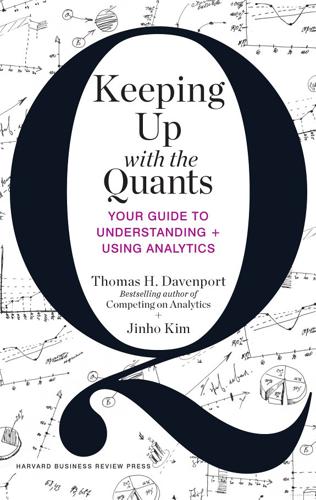
Keeping Up With the Quants: Your Guide to Understanding and Using Analytics
by
Thomas H. Davenport
and
Jinho Kim
Published 10 Jun 2013
Nuttall, “The Passionate Statistician,” Nursing Times 28 (1983): 25–27. 5. Gregor Mendel, “Experiments in Plant Hybridization,” http://www.mendelweb.org/; “Gregor Mendel,” Wikipedia, http://en.wikipedia.org/wiki/Gregor_Mendel; Seung Yon Rhee, Gregor Mendel, Access Excellence, http://www.accessexcellence.org/RC/AB/BC/Gregor_Mendel.php; “Mendel’s Genetics,” anthro.palomar.edu/mendel/mendel_1.htm; David Paterson, “Gregor Mendel,” www .zephyrus.co.uk/gregormendel.html; “Rocky Road: Gregor Mendel,” Strange Science, www.strangescience.net/mendel.htm; Wolf-Ekkehard Lönnig, “Johann Gregor Mendel: Why His Discoveries Were Ignored for 35 Years,” www.weloennig .de/mendel02.htm; “Gregor Mendel and the Scientific Milieu of His Discovery,” www.2iceshs.cyfronet.pl/2ICESHS_Proceedings/Chapter_10/R-2_Sekerak.pdf; “Mendelian Inheritance,” Wikipedia, http://en.wikipedia.org/wiki/Mendelian_ inheritance. 6.
…
FIGURE 4-1 * * * Florence Nightingale’s diagram of the causes of mortality in the “Army in the East” The Areas of the blue, red, & black wedges are each measured from the centre as the common vertex The blue wedges measured from the centre of the circle represent area for area the deaths from Preventible or Mitigable Zymotic Diseases, the red wedges measured from the centre the deaths from wounds, & the black wedges measured from the centre the deaths from all other causes The black line across the red triangle in Nov 1854 marks the boundary of the deaths from all other causes during the month In October 1854, & April 1855, the black area coincides with the red, in January & February 1856, the blue coincides with the black The entire areas may be compared by following the blue, the red, & the black lines enclosing them * * * Nightingale became a Fellow of the Royal Statistical Society in 1859—the first woman to become a member—and an honorary member of the American Statistical Association in 1874. Karl Pearson, a famous statistician and the founder of the world’s first university statistics department, acknowledged Nightingale as a “prophetess” in the development of applied statistics.4 Gregor Mendel: A Poor Example of Communicating Results For a less impressive example of communicating results—and a reminder of how important the topic is—consider the work of Gregor Mendel.5 Mendel, the father of the concept of genetic inheritance, said a few months before his death in 1884 that, “My scientific studies have afforded me great gratification; and I am convinced that it will not be long before the whole world acknowledges the results of my work.”
…
Gregor Mendel, “Experiments in Plant Hybridization,” http://www.mendelweb.org/; “Gregor Mendel,” Wikipedia, http://en.wikipedia.org/wiki/Gregor_Mendel; Seung Yon Rhee, Gregor Mendel, Access Excellence, http://www.accessexcellence.org/RC/AB/BC/Gregor_Mendel.php; “Mendel’s Genetics,” anthro.palomar.edu/mendel/mendel_1.htm; David Paterson, “Gregor Mendel,” www .zephyrus.co.uk/gregormendel.html; “Rocky Road: Gregor Mendel,” Strange Science, www.strangescience.net/mendel.htm; Wolf-Ekkehard Lönnig, “Johann Gregor Mendel: Why His Discoveries Were Ignored for 35 Years,” www.weloennig .de/mendel02.htm; “Gregor Mendel and the Scientific Milieu of His Discovery,” www.2iceshs.cyfronet.pl/2ICESHS_Proceedings/Chapter_10/R-2_Sekerak.pdf; “Mendelian Inheritance,” Wikipedia, http://en.wikipedia.org/wiki/Mendelian_ inheritance. 6. This list was adapted and modified from one on the IBM ManyEyes site; see http://www-958.ibm.com/software/data/cognos/manyeyes/page/Visualization_Options.html. 7. This example is from the SAS Visual Analytics 5.1 User’s Guide, “Working with Automatic Charts,” http://support.sas.com/documentation/cdl/en/vaug/65384/ HTML/default/viewer.htm#n1xa25dv4fiyz6n1etsfkbz75ai0.htm. 8.

The Gene: An Intimate History
by
Siddhartha Mukherjee
Published 16 May 2016
In October 1843, a young man from Silesia: Details of Mendel’s life and the Augustinian monastery are from several sources, including Gregor Mendel, Alain F. Corcos, and Floyd V. Monaghan, Gregor Mendel’s Experiments on Plant Hybrids: A Guided Study (New Brunswick, NJ: Rutgers University Press, 1993); Edward Edelson, Gregor Mendel: And the Roots of Genetics (New York: Oxford University Press, 1999); and Robin Marantz Henig, The Monk in the Garden: The Lost and Found Genius of Gregor Mendel, the Father of Genetics (Boston: Houghton Mifflin, 2000). The tumult of 1848: Edward Berenson, Populist Religion and Left-Wing Politics in France, 1830–1852 (Princeton, NJ: Princeton University Press, 1984).
…
Darwin’s theory of evolution by variation and natural selection demanded a theory of heredity via genes. Close readers of Darwin’s theory realized that evolution could work only if there were indivisible, but mutable, particles of heredity that transmit information between parents and offspring. Yet Darwin, having never read Gregor Mendel’s paper, never found an adequate formulation of such a theory during his lifetime. Gregor Mendel holds a flower, possibly from a pea plant, in his monastery garden in Brno (now in the Czech Republic). Mendel’s seminal experiments in the 1850s and ’60s identified indivisible particles of information as carriers of hereditary information. Mendel’s paper (1865) was largely ignored for four decades, and then transformed the science of biology.
…
he made extensive handwritten notes on pages 50, 51, 53, and 54: David Galton, “Did Darwin read Mendel?” Quarterly Journal of Medicine 102, no. 8 (2009): 588, doi:10.1093/qjmed/hcp024. “Flowers He Loved” “Flowers He Loved”: Edward Edelson, Gregor Mendel and the Roots of Genetics (New York: Oxford University Press, 1999), “Clemens Janetchek’s Poem Describing Mendel after His Death,” 75. “We want only to disclose the [nature of] matter and its force”: Jiri Sekerak, “Gregor Mendel and the scientific milieu of his discovery,” ed. M. Kokowski (The Global and the Local: The History of Science and the Cultural Integration of Europe, Proceedings of the 2nd ICESHS, Cracow, Poland, September 6–9, 2006).
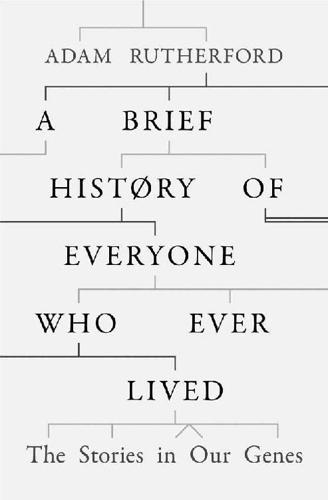
A Brief History of Everyone Who Ever Lived
by
Adam Rutherford
Published 7 Sep 2016
Since 1953, we’ve known that the double helix is how DNA is built, giving it the impressive ability to copy itself and allow those copies to build cells just like the ones they came from. And since the 1960s we’ve known how DNA encodes proteins, and that all life is built of, or by, proteins. Those titans of science, Gregor Mendel, Francis Crick, James Watson, Rosalind Franklin and Maurice Wilkins, stood on their predecessors’ and colleagues’ shoulders, and would in turn be the giants from whose shoulders all biologists would see into the future. The unravelling of these mysteries were the great science stories of the twentieth century, and by the beginning of the twenty-first the principles of biology were set in place.
…
Darwin invented evolutionary biology; Galton founded and formalized many aspects of the biological study of humans. They both worked at a time when great leaps were being made in the study of life, which would lead to further unifying theories of biology. The great nineteenth-century Moravian scientist17 Gregor Mendel’s work from exactly the same mid-century time, though ignored until the beginning of the twentieth century, described the rules of inheritance – how characteristics pass down the generations from two parents to one child. In the first few decades of the twentieth century, primarily at UCL, a new breed of biology emerged which combined statistics and Darwin, and formalized the mechanism by which evolution by natural selection occurs.
…
As discussed, even the most genetically straightforward diseases, such as cystic fibrosis, are mitigated by a host of other factors buzzing around inside our genes, cells, and outside our bodies. Inheritance is a game of probability, not of destiny. It’s not just the headline writer’s fault though. The history of science is clearly to blame too. Recall Gregor Mendel, who gave us the rules of inheritance by studying individual characteristics in pea plants. Through the twentieth century we beavered away at the laws of inheritance, and unravelled DNA, and cracked the genetic code. In the 1980s, the first disease genes that we identified were indeed ‘for’ specific diseases, cystic fibrosis, Duchenne muscular dystrophy, Huntington’s.
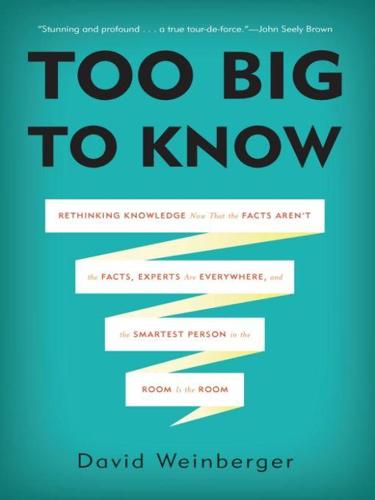
Too Big to Know: Rethinking Knowledge Now That the Facts Aren't the Facts, Experts Are Everywhere, and the Smartest Person in the Room Is the Room
by
David Weinberger
Published 14 Jul 2011
He supported his scientific work through his travel writings, and later in his life through an inheritance from his father. He was, however, well integrated into the community of scientists, and was a member of scientific organizations such as the Royal Zoological Society, the Royal Society, and the Linnean Society. Gregor Mendel was at a whole other level of amateurism. Unable to pass the qualifying exams to teach high school students, he worked for years in his monastery’s garden, observing the peculiarities of generations of smooth and wrinkled peas. Today Mendel’s name is almost always followed by the phrase “the father of genetics.”
…
Today Mendel’s name is almost always followed by the phrase “the father of genetics.” During his lifetime, however, he was unrecognized and uninvolved in either the profession or the community of science. Science has a long tradition of embracing amateurs. After all, truth is truth, no matter who utters it. On the other hand, if the manuscript Gregor Mendel sent Charles Darwin had been marked as coming from a prestigious university, Darwin might have cut the folded pages and read it.19 If the self-taught math genius Srinivasa Ramanujan had not written to three Cambridge professors in 1912–1913, his lifetime of work—including the “Ramanujan Conjecture”—might have vanished without impact.
…
See also the exceptional RadioLab program on this topic: “Limits of Science,” April 16, 2010, http://www.wnyc.org/shows/radiolab/episodes/2010/04/16/segments/149570. 18 Nicholas Taleb Nassim, The Black Swan (Random House, 2007). 19 The story may be apocryphal, according to a report by Nicholas Wade in “A Family Feud over Mendel’s Manuscript on the Laws of Heredity,” May 31, 2010, http://philosophyofscienceportal.blogspot.com/2010/06/gregor-mendel-and-pea-breeding.html. 20 Jennifer Laing, “Comet Hunter,” Universe Today, December 11, 2001, http://www.universetoday.com/html/articles/2001–1211a.html. 21 Jennifer Ouellette, “Astronomy’s Amateurs a Boon for Science,” Discovery News, September 20, 2010, http://news.discovery.com/space/astronomys-amateurs-a-boon-for-science.html. 22 Mark Frauenfelder, “The Return of Amateur Science,” Boing Boing, December 22, 2008, http://www.good.is/post/the-return-of-amateur-science/. 23 Thanks to the people who responded to the request for examples I posted on my Web site: Garrett Coakley, Jeremy Price, Miriam Simun, Andrew Weinberger, Jim Richardson, and Lars Ludwig.
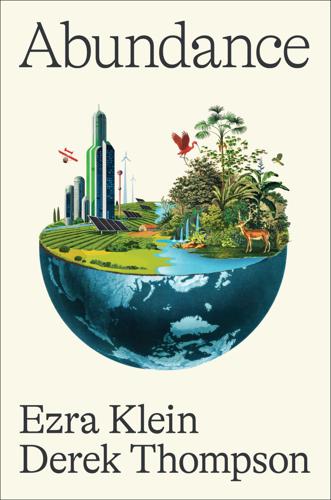
Abundance
by
Ezra Klein
and
Derek Thompson
Published 18 Mar 2025
Element 117, tennessine, was discovered only when a Tennessee laboratory created an isotope of the rare metal berkelium and sent twenty-two milligrams of the radioactive material to Russia, where a separate group of scientists at a nuclear research facility hit it with a beam of 6 trillion calcium ions per second for 150 days and used specialized equipment to detect the faintest whispers of tennessine flickering into existence for less than a second.45 While it’s hard to say how the next synthetic element will be detected, it is safe to assume that it will not be discovered in a pot of hot urine. If that example seems a little goofy, try this one. The godfather of genetics was Gregor Mendel. A Czech friar in the mid-1800s, Mendel grew peas of varying shape, color, and flower position in his monastery’s garden. He bred the pea plants by cross-pollination over generations and noticed that peas seemed to pass down their traits, producing predictable crossbreeds. Although his 1866 analysis46 was published to little fanfare, a group of botanists later rediscovered Mendel’s work, independently confirmed the principles of inheritance, and cracked open the field of genetics.
…
Such research—called genome-wide association studies—takes hundreds of geneticists, neuroscientists, computer programmers, assistants, and more working together in organized teams over many years to get us one small step closer to solving the riddle of schizophrenia. It is absurd to imagine that one person, even as brilliant as Gregor Mendel, could do all this alone in his backyard. That is Jones’s point in a nutshell. Scientific progress is a blessing that comes with a curse. The unsolved problems are typically harder than the solved ones. * * * If keeping up the pace of scientific progress demands more resources, it points to a clear solution: recruit more scientists and spend more money.
…
Oak Ridge National Laboratory, “Big Science: The Discovery of Tennessine,” January 27, 2017, https://www.ornl.gov/sites/default/files/Ts_Program%20Final%20sm.pdf; Periodic Table, Tennessine, Element Summary, 3. History, National Institutes of Health, https://pubchem.ncbi.nlm.nih.gov/element/Tennessine#section=Estimated-Oceanic-Abundance; Scott Alexander, “Is Science Slowing Down?,” Slate Star Codex (blog), November 26, 2018, https://slatestarcodex.com/2018/11/26/is-science-slowing-down-2/. 46. Gregor Mendel, “Versuche über Plflanzenhybriden,” Verhandlungen des Naturforschenden Vereines in Brünn 5 (1865): 3–47. Presented orally at the February 8 and March 8, 1865, meetings of the Brünn Natural History Society. Published in 1866, Brünn, Czechoslovakia, by Verlag des Vereines. Biodiversity Heritage Library, https://www.biodiversitylibrary.org/item/124139#page/5/mode/1up.
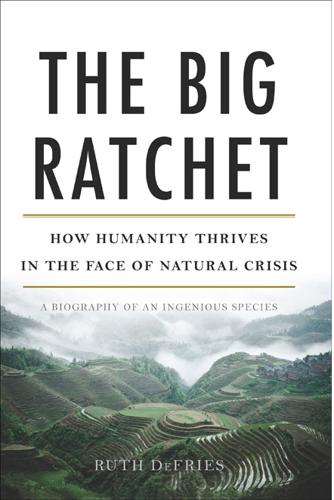
The Big Ratchet: How Humanity Thrives in the Face of Natural Crisis
by
Ruth Defries
Published 8 Sep 2014
Agriculture: A Walk Through the Past and a Step into the New Millennium. National Agricultural Statistics Service, Washington, DC. Wallace, H., and W. Brown. 1988. Corn and Its Early Fathers, rev. ed. Iowa State University Press, Ames. Weiling, F. 1991. Historical study: Johan Gregor Mendel, 1822–1884. American Journal of Medical Genetics 40:1–25. Zirkle, C. 1951. Gregor Mendel and his precursors. Isis 42:97–104. Chapter 8: Competition for the Bounty Abate, T., A. van Huis, and J. Ampofo. 2000. Pest management strategies in traditional agriculture: An African perspective. Annual Reviews of Entomology 45:631–659. Agency for Toxic Substances and Disease Registry. 2002.
…
Darwin had hit upon the principle of hybrid vigor, the truth that offspring from parents of different varieties—whether corn, cows, or dogs—grow faster and are generally more robust and healthy than those bred from parents of the same variety. Only a few years after Darwin published On the Origin of Species, the devout Austrian monk Gregor Mendel began his eight-year experiment with the common pea in the monastery’s garden. Although he was a brilliant student, Mendel’s upbringing in a poor peasant family in what is now the Czech Republic had left him struggling to make ends meet while pursuing his studies. When he joined the priesthood, he was so shy and his health was so poor that he could not take on pastoral duties.
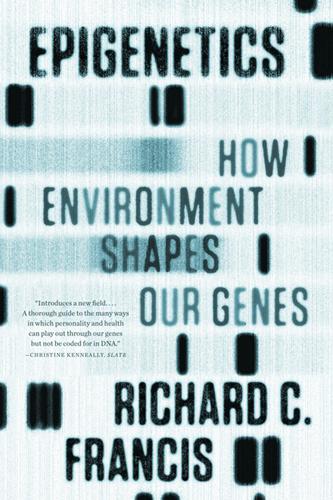
Epigenetics: How Environment Shapes Our Genes
by
Richard C. Francis
Published 14 May 2012
On any given day you could find at their labors two future Nobel prize laureates, as well as several other scientists who were to shape the course of genetics. First among them was the man who occupied the lone office, Thomas Hunt Morgan, whose significance in the history of genetics is second only to that of the Moravian monk Gregor Mendel.1 Morgan’s goal was to determine the location of Mendel’s “hereditary factors”—now called genes—on particular chromosomes. Morgan’s gene mapping was much different than today’s gene mapping. The technology was not then available to directly locate genes on chromosomes. Instead, he had to take a much more indirect route.
…
GR proteins, see glucocorticoid receptors GTRH, see gonadotropin releasing hormone guanine guinea pigs: domestication of genetic studies with stress biasing in hair color Harlow, Harry heart cells gene expression in heart disease, see cardiovascular disease Herodotus heterozygous alleles high blood pressure hinnies, see mules, hinnies hippocampus histones Hobbes, Thomas Holocaust, PTSD and homozygous alleles horbra hormones see also specific hormones housekeeping genes HPA programming, see stress biasing humans, protracted infancy and childhood of Huntington’s disease hybrid dysgenesis hybridization see also mules, hinnies hypomethylation see also methylation/demethylation hypothalamic-pituitary-adrenal (HPA) axis, see stress axis hypothalamic-pituitary-gonadal (HPG) axis hypothalamus identical twins, see monozygotic twins IGF2 (insulin-like growth factor 2) IGF2 gene IGF2 inhibitor immune system cancer and self-nonself distinction in imprinting, genomic active vs. inactive alleles in disruptions in effect of environmental toxins on maternal origin and methylation in parent-of-origin effect in paternal origin and transgenerational effects of imprinting control regions (ICRs) Indian Ocean tsunami (2004) induced pluripotent stem cells (iPSCs) inheritance: epigenetic processes in see also epigenetic inheritance; imprinting, genomic; social inheritance injury repair, cellular dedifferentiation in intracisternal A particle (IAP) introns Inuits Janus metaphor Juiced (Canseco) Just, Ernest Everett Kallmann syndrome, ix–xi kangaroos, see marsupials Katrina, Hurricane Kentucky Fried Chicken kidney disease kidneys: gene expression in melanin production in Kit gene La Russa, Tony lethal yellow (AL) agouti allele leukemia Leviathan (Hobbes) lick grooming, stress biasing and life expectancy: birth weight and stress biasing and ligers limbic system Lin, Maya lin-4 Linnaeus, Carl lipids liver: gene expression in GR expression in melanin production in locus, loci, of genes lung disease lupus Lyon, Mary male mammals, effects of endocrine disruptors in mammals, regeneration in Marathon, Battle of marsupials: X inactivation in see also Tasmanian devils maternal environment, see fetal environment maternal style transgenerational transmission of McDonald’s McGwire, Mark Meaney, Michael melanin melanocyte stimulating hormone melanoma Mendel, Gregor Mendel’s laws messenger RNA (mRNA) metabolic syndrome metastasis methylation/demethylation in cancer cells diet and of DNA of estrogen receptors in genomic imprinting of GR gene of histones permanence of randomness in of viable yellow allele in X inactivation methyl group (CH3) mice and rats: agouti locus in, see agouti locus Axin gene in gene methylation in imprinting disruption in stress biasing in microenvironment, of cancer cells microRNA monozygotic twins: discordances in epigenetic alterations in Kallmann syndrome in stress responses in Morgan, Thomas Hunt mortality, male vs. female risk of mothering: affectionless control in in gorillas hormonal changes and infant-mother bond and as social inheritance stress biasing and see also maternal style; parenting motherless mothers as vicious cycle Mount Williams National Park mules, hinnies multipotent cells Mus muscle: androgen receptors in genomic imprinting and mutation cancer and dominant vs. recessive alleles in natural disasters natural experiments naturalism Neel, James neonates, link between birth weight and health of neural crest cells neural stem cells neurons Newtonian physics NGF (NGFI-A; nerve growth factor inducible factor A) NGF gene normalization, of cancer cells nutrition, maternal, fetal development and obesity: agouti alleles and birth weight and childhood in Dutch famine cohort epigenetic explanations of as family trait fetal environment and gene mutation and genetic explanations of genomic imprinting and GR expression and Western lifestyle and obsessive-compulsive disorder, maternal style and Ohno, Susumu olfaction, epigenetic inheritance and olfaction, Kallmann syndrome and, ix–x olfactory placode oligopotent cells oncogenes see also cancer “one gene – one protein” rule opsin genes organicism organ transplants osteoporosis oxytocin Pacific Islanders Paradorn (pseud.)
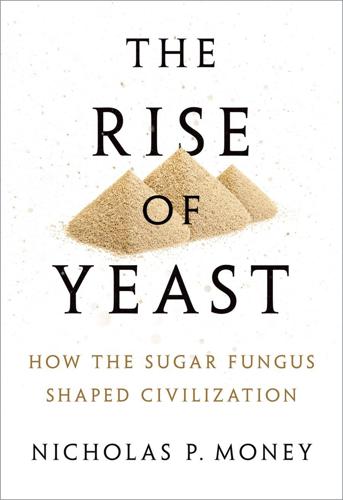
The Rise of Yeast: How the Sugar Fungus Shaped Civilisation
by
Nicholas P. Money
Published 22 Feb 2018
Cells like this, which contain a single set of chromosomes, are described as haploid. Animal and plant cells with two sets of chromosomes are diploid. Being diploid means that the effects of one version of a gene, called an allele, can be masked by another version of the same gene on the matching chromosome. This allows us, like Gregor Mendel’s pea plants, to pass mutated versions of genes to our offspring without displaying their effects ourselves. An imbalance in fat metabolism, for example, can be passed to a child from both parents that carry a defective gene yet enjoy healthy levels of fat storage themselves. The errant version of the gene carried by both parents hides behind the uncorrupted gene on their second version of the same chromosome.
…
Winge was a Danish investigator who worked at the Carlsberg Laboratory in Copenhagen, established by the famous Carlsberg Brewery.10 Winge designed a method for carrying out specific mating reactions between yeast strains using their ascospores, and demonstrated that the fungus behaved according to Gregor Mendel’s rules of inheritance. These experiments added to the growing sense that Saccharomyces could be the perfect experimental organism for genetic research. In the 1940s, Carl and Gertrude Lindegren discovered the a and α mating types of yeast. The Lindegrens’ lab at Washington University in St. Louis enjoyed funding from the Anheuser-Busch Company, whose products include the iconic Budweiser lager.

The Magic of Reality: How We Know What's Really True
by
Richard Dawkins
Published 3 Oct 2011
But you can’t see the details of what DNA looks like, even with a powerful microscope. Almost everything we know about DNA comes indirectly from dreaming up models and then testing them. Actually, long before anyone had even heard of DNA, scientists already knew lots about genes from testing the predictions of models. Back in the nineteenth century, an Austrian monk called Gregor Mendel did experiments in his monastery garden, breeding peas in large quantities. He counted the numbers of plants that had flowers of various colours, or that had peas that were wrinkly or smooth, as the generations went by. Mendel never saw or touched a gene. All he saw were peas and flowers, and he could use his eyes to count different types.
…
The predictions of one model, the so-called double helix model, exactly fitted the measurements made by Rosalind Franklin and Maurice Wilkins, using special instruments involving X-rays beamed into crystals of purified DNA. Watson and Crick also immediately realized that their model of the structure of DNA would produce exactly the kind of results seen by Gregor Mendel in his monastery garden. We come to know what is real, then, in one of three ways. We can detect it directly, using our five senses; or indirectly, using our senses aided by special instruments such as telescopes and microscopes; or even more indirectly, by creating models of what might be real and then testing those models to see whether they successfully predict things that we can see (or hear, etc.), with or without the aid of instruments.
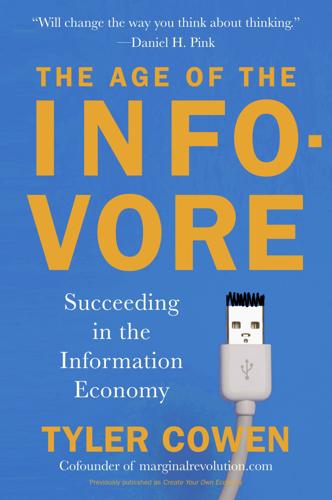
The Age of the Infovore: Succeeding in the Information Economy
by
Tyler Cowen
Published 25 May 2010
It turns out she has developed a system for remembering people by their clothes and that she applied her system very conscientiously and consistently; without the system she would be lost. People such as myself, who have normal face-recognition abilities, usually have no such system. The result was that this woman—some might call her “handicapped”—had a much better sense of the crowd than I did. Charles Darwin, Gregor Mendel, Thomas Edison, Nikola Tesla, Albert Einstein, Isaac Newton, Samuel Johnson, Vincent van Gogh, Thomas Jefferson, Bertrand Russell, Jonathan Swift, Alan Turing, Paul Dirac, Glenn Gould, Steven Spielberg, and Bill Gates, among many others, are all on the rather lengthy list of famous figures who have been identified as possibly autistic or Asperger’s.
…
If you’re wondering, a typical list of historical figures claimed to be on the autism spectrum includes Hans Christian Andersen, Lewis Carroll, Herman Melville, George Orwell, Jonathan Swift, William Butler Yeats, James Joyce, Bela Bartók, Bob Dylan, Glenn Gould, Vincent van Gogh, Andy Warhol, Mozart, Gregor Mendel, Charles Darwin, Ludwig Wittgenstein, Henry Cavendish, Samuel Johnson, Albert Einstein, Alan Turing, Paul Dirac, Emily Dickinson, Michelangelo, Bertrand Russell, Thomas Jefferson, Thomas Edison, Nikola Tesla, Isaac Newton, and Willard Van Orman Quine, among others. When it comes to any individual life, I have my worries about making any firm judgments.
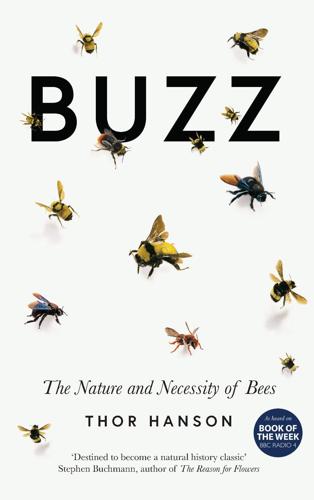
Buzz: The Nature and Necessity of Bees
by
Thor Hanson
Published 1 Jul 2018
After numerous complaints, the publisher deleted it completely from the third, fourth, and fifth editions. But the idea of pollination could be tested by anyone with access to a farm, a garden, or even a flowerpot. Eventually, the dance between bees and flowers came to fascinate some of the greatest thinkers in biology, including such luminaries (and beekeepers) as Charles Darwin and Gregor Mendel. Today, pollination remains a vital field of study, because we know it is more than simply illuminating: it is irreplaceable. In the twenty-first century, sweetness comes to us from refined sugars, wax is a by-product of petroleum, and we get our light with the flick of a switch. But for the propagation of nearly every crop and wild plant not serviced by the wind, our reliance upon bees remains complete.
…
Alfalfa Chickpea Leek Potato Allspice Chi li pepper Lemon Prickly pear Almond Chives Lentil Pumpkin Anise Citron Lettuce Quince Annatto Cloudberry Lime Radicchio Apple Clover Loquat Radish Apricot Cloves Lychee Rambutan Artichoke Coconut Macadamia Rapeseed Asparagus Coffee Mandarin Raspberry Aubergine Collards Mango Red currant Avocado Coriander Marjoram Red pepper Barbados cherry Cotton Medlar Rose hips Basil Courgette Millet Rosemary Bay leaf Cowpea Muscadine grape Rowanberry Beans (various) Cranberry Muskmelon Rutabaga Bergamot Cucumber Mustard Safflower Black currant Cumin Nectarine Sage Blackberry Dewberry Nutmeg Sapote Blueberry Dill Oil palm Sesame Brazil nut Durian Okra Soybean Breadfruit Elderberry Onion Squash Broccoli Endive Orange Starfruit Brussels sprouts Fennel Oregano Stevia Buckwheat Fenugreek Papaya Strawberry Cabbage Flaxseed Paprika Sugarcane Canola Garlic Parsley Sunflower Cantaloupe Grapefruit Parsnip Sweet potato Caraway Groundnut Passionfruit Tamarind Cardamom Guar Peach Tangerine Carrot Guava Peanut Thyme Cashew Hog plum Pear Tomatillo Cassava Jackfruit Pepper Tomato Cauliflower Jujube Persimmon Turnip Celeriac Kale Pigeon pea Vanilla Celery Kiwfruit Pimento Watermelon Chayote Kohlrabi Plum Yams Cherry Kola nut Pomegranate Chestnut Kumquat Pomelo Whether measured by quantity, variety, nutrition, or flavor, nearly every bite of food we take feels some effect from bees. But it’s worth pointing out that other animal pollination options do exist. Flies, wasps, thrips, birds, beetles, and bats do a bit of crop pollination, and, in a pinch, so do people. Gregor Mendel hand-pollinated over ten thousand pea plants in his pioneering study of genetics, and modern plant breeders use similar techniques to create new hybrids or to cross particularly promising varieties. But for anything produced on a commercial scale, pollinating by hand is usually considered too labor intensive to be anything more than a last resort.
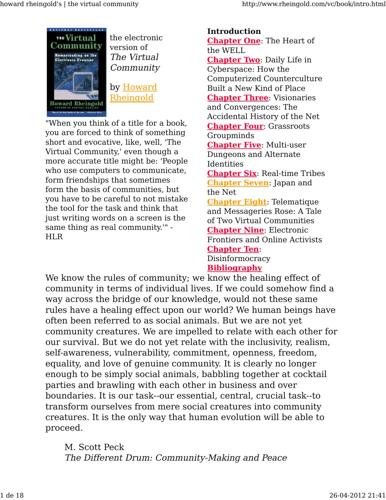
Howard Rheingold
by
The Virtual Community Homesteading on the Electronic Frontier-Perseus Books (1993)
Published 26 Apr 2012
If more and more scientific communication moves onto the Net, as it seems to be doing, where anybody who has net access to put forth their equations or their theory along with the academicians, several kinds of results are likely. First, you are as marginalized as Gregor Mendel was if you are a member of neither the academy nor the Net, because that is where all the important attention will be. Second, if you are Gregor Mendel, all you have to do is gain net access in order to participate in the international group conversation of science. But before the Net grew enough to allow citizen participation, access to the Net enabled scientists in quickly moving fields to have their own specialized versions of the living database that the WELL and Usenet provides other groups; to the degree that the process of science is embedded in group communication, the many-to-many characteristic of virtual communities can both accelerate and democratize access to cutting-edge knowledge.
…
From this process of observation, experimentation, theorization, and communication, scientific knowledge is supposed to emerge. The bottleneck is access to the academy, to the scientific hierarchies that admit novices to circles where their communications can be noticed. In the nineteenth century, an Austrian monk, Gregor Mendel, experimented with sweet peas and discovered the laws of genetics, but he did not have access to the highest scientific journals. The knowledge lay fallow for decades, until it was rediscovered in an obscure journal by biologists who were on the track of the mysteries of genetics. Mendel's experience is worth remembering as scientific discourse moves onto the Net.

The Book of Why: The New Science of Cause and Effect
by
Judea Pearl
and
Dana Mackenzie
Published 1 Mar 2018
That stability, now called the Hardy-Weinberg equilibrium, received a satisfactory mathematical explanation in the work of G. H. Hardy and Wilhelm Weinberg in 1908. And yes, they used yet another causal model—the Mendelian theory of inheritance. In retrospect, Galton could not have anticipated the work of Mendel, Hardy, and Weinberg. In 1877, when Galton gave his lecture, Gregor Mendel’s work of 1866 had been forgotten (it was only rediscovered in 1900), and the mathematics of Hardy and Weinberg’s proofs would likely have been beyond him. But it is interesting to note how close he came to finding the right framework and also how the causal diagram makes it easy to zero in on his mistaken assumption: the transmission of luck from one generation to the next.
…
Later, when Sewall worked in Washington, DC, Philip did likewise, first at the US Tariff Commission and then at the Brookings Institution as an economist. Although their academic interests diverged, they nevertheless found ways to collaborate, and Philip was the first economist to make use of his son’s invention of path diagrams. Wright came to Harvard to study genetics, at the time one of the hottest topics in science because Gregor Mendel’s theory of dominant and recessive genes had just been rediscovered. Wright’s advisor, William Castle, had identified eight different hereditary factors (or genes, as we would call them today) that affected fur color in rabbits. Castle assigned Wright to do the same thing for guinea pigs. After earning his doctorate in 1915, Wright got an offer for which he was uniquely qualified: taking care of guinea pigs at the US Department of Agriculture (USDA).
…
Remember that it is always advantageous, as in Snow’s example, to use an instrumental variable that is randomized. If it’s randomized, no causal arrows point toward it. For this reason, a gene is a perfect instrumental variable. Our genes are randomized at the time of conception, so it’s just as if Gregor Mendel himself had reached down from heaven and assigned some people a high-risk gene and others a low-risk gene. That’s the reason for the term “Mendelian randomization.” Could there be an arrow going the other way, from HDL Gene to Lifestyle? Here we again need to do “shoe-leather work” and think causally.
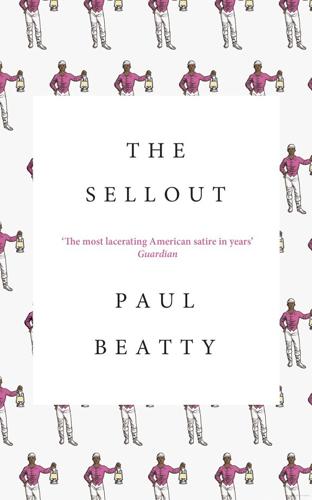
The Sellout: A Novel
by
Paul Beatty
Published 2 Mar 2016
But anyone who’d ever been to Tito’s Tacos and tasted a warm cupful of the greasy, creamy, refried frijole slop covered in a solid half-inch of melted cheddar cheese knew the bean had already reached genetic perfection. I remember wondering why George Washington Carver. Why couldn’t I have been the next Gregor Mendel, the next whoever it was that invented the Chia Pet, and even though nobody remembers Captain Kangaroo, the next Mr. Green Jeans? So I chose to specialize in the plant life that had the most cultural relevance to me—watermelon and weed. At best I’m a subsistence farmer, but three or four times a year, I’ll hitch a horse to the wagon and clomp through Dickens, hawking my wares, Mongo Santamaría’s “Watermelon Man” blasting from the boom box.
…
Stroke her with techniques that are basically the same ones I used on the thoroughbreds at school after a work-study day of galloping and breezing horses in the fields. Rub her ears. Blow gently into her nostrils. Work her joints. Brush her hair. Shotgun weed smoke into her pursed and needy lips. When she hands me the baby, and I descend the stairs into the applause of the waiting crowd, I’d like to think that Gregor Mendel, George Washington Carver, and even my father would be proud, and sometime while they’re being strapped to the gurney or consoled by a distraught grandmother, I’ll ask them, “Why Wednesday?” Five Dickens’s evanesce hit some folks harder than others, but the citizen who needed my services the most was old man Hominy Jenkins.
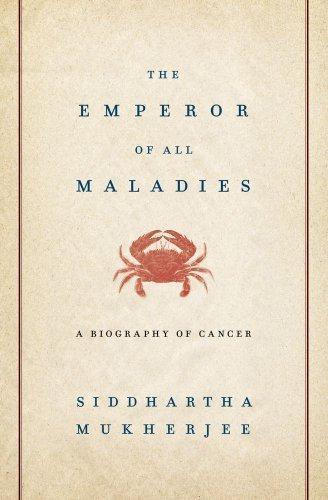
The Emperor of All Maladies: A Biography of Cancer
by
Siddhartha Mukherjee
Published 16 Nov 2010
This is a reprint and new translation of the original text. 342 “unitary cause of carcinoma”: Ibid., 56. 342 not “an unnatural group of different maladies”: Ibid., 56. 342 In 1910, four years before Boveri had published his theory: Peyton Rous, “A Transmissible Avian Neoplasm (Sarcoma of the Common Fowl),” Journal of Experimental Medicine 12, no. 5 (1910): 696–705; Peyton Rous, “A Sarcoma of the Fowl Transmissible by an Agent Separable from the Tumor Cells,” Journal of Experimental Medicine 13, no. 4 (1911): 397–411. 342 In 1909, a year before: Karl Landsteiner et al., “La transmission de la paralysie infantile aux singes,” Compt. Rend. Soc. Biologie 67 (1909). 343 In the early 1860s, working alone: Gregor Mendel, “Versuche über Plfanzenhybriden,” Verhandlungen des Naturforschenden Vereines in Brünn. IV für das Jahr 1865, Abhandlungen (1866): 3–47. English translation available at http://www.esp.org/foundations/genetics/classical/gm-65.pdf (accessed January 2, 2010). Also see Robin Marantz Henig, The Monk in the Garden: The Lost and Found Genius of Gregor Mendel, the Father of Genetics (Boston: Mariner Books, 2001), 142. 343 decades later, in 1909, botanists: Wilhelm Ludwig Johannsen, Elemente der Exakten Erblichkeitlehre (1913), http://caliban.mpiz-koeln.mpg.de/johannsen/elemente/index.html (accessed January 2, 2010). 344 In 1910, Thomas Hunt Morgan: See T.
…
While the mechanistic understanding of the cancer cell remained suspended in limbo between viruses and chromosomes, a revolution in the understanding of normal cells was sweeping through biology in the early twentieth century. The seeds of this revolution were planted by a retiring, nearsighted monk in the isolated hamlet of Brno, Austria, who bred pea plants as a hobby. In the early 1860s, working alone, Gregor Mendel had identified a few characteristics in his purebred plants that were inherited from one generation to the next—the color of the pea flower, the texture of the pea seed, the height of the pea plant. When Mendel intercrossed short and tall, or blue-flowering and green-flowering, plants using a pair of minute forceps, he stumbled on a startling phenomenon.
…
Kalckar, and Otto Warburg. On Cancer and Hormones: Essays in Experimental Biology. Chicago: University of Chicago Press, 1962. Hall, Steven S. Invisible Frontiers: The Race to Synthesize a Human Gene. New York: Atlantic Monthly Press, 1987. Henig, Robin Marantz. The Monk in the Garden: The Lost and Found Genius of Gregor Mendel, the Father of Genetics. New York: Mariner Books, 2001. Hill, John. Cautions against the Immoderate Use of Snuff. London: R. Baldwin and J. Jackson, 1761. Hilts, Philip J. Protecting America’s Health: The FDA, Business, and One Hundred Years of Regulation. New York: Knopf, 2003. Huggins, Charles.
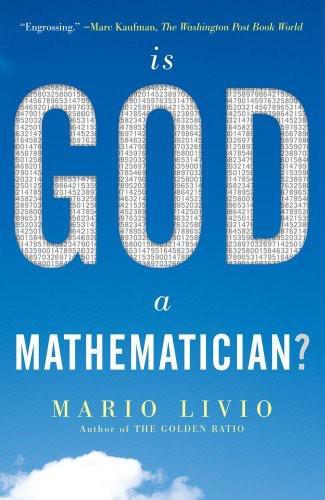
Is God a Mathematician?
by
Mario Livio
Published 6 Jan 2009
OK, you may think, but other than in casino games and other gambling activities, what additional uses can we make of these very basic probability concepts? Believe it or not, these seemingly insignificant probability laws are at the heart of the modern study of genetics—the science of the inheritance of biological characteristics. The person who brought probability into genetics was a Moravian priest. Gregor Mendel (1822–84) was born in a village near the border between Moravia and Silesia (today Hyncice in the Czech Republic). After entering the Augustinian Abbey of St. Thomas in Brno, he studied zoology, botany, physics, and chemistry at the University of Vienna. Upon returning to Brno, he began an active experimentation with pea plants, with strong support from the abbot of the Augustinian monastery.
…
Hardy Addresses the British Association in 1922, part 1.” http://www-history.mcs.st-andrews.ac.uk/Extras/BA_1922_1.html. Odom, B., Hanneke, D., D’Urso, B., and Gabrielse, G. 2006. Physical Review Letters, 97, 030801. Ooguri, H., and Vafa, C. 2000. Nuclear Physics B, 577, 419. Orel, V. 1996. Gregor Mendel: The First Geneticist (New York: Oxford University Press). Overbye, D. 2000. Einstein in Love: A Scientific Romance (New York: Viking). Pais, A. 1982. Subtle Is the Lord: The Science and Life of Albert Einstein (Oxford: Oxford University Press). Panek, R. 1998. Seeing and Believing: How the Telescope Opened Our Eyes and Minds to the Heavens (New York: Viking).
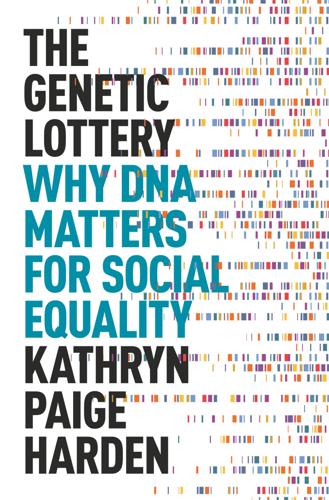
The Genetic Lottery: Why DNA Matters for Social Equality
by
Kathryn Paige Harden
Published 20 Sep 2021
What selective breeding allowed the agricultural industry to do was make the genetic variants that increase milk production more common in the cow population, which increases the number of milk-increasing genetic variants that are concentrated in combination in any one single animal.12 Thinking about combinations of many genetic variants, which can be concentrated to varying degrees in a single animal, might be unintuitive. If, like me, you first encountered genetics in high school biology, your introduction to genetics was Gregor Mendel and his pea plants. The pea plant characteristics that Mendel worked with (tall versus short, wrinkly versus smooth, green versus yellow) were determined by a single genetic variant. In contrast, the human characteristics we care most about—things like personality and mental disease, sexual behavior and longevity, intelligence test scores and educational attainment—are influenced by many (very, very, very many) genetic variants, each of which contributes only a tiny drop of water to the swimming pool of genes that make a difference.
…
For each of my twenty-three pairs of chromosomes, the chromosome that I inherited from my mother and the chromosome that I inherited from my father line up and trade pieces. This recombination process does, in fact, re-combine genetic variants into brand new combinations that are all different from each other. The recombination process is the biological basis of what Gregor Mendel, on the basis of his mathematical observations, called the law of independent assortment. The probability of inheriting a certain version of gene A is independent from the probability of inheriting a certain version of gene B. Except, that is, when gene A and gene B are very close to each other, physically, on the genome.
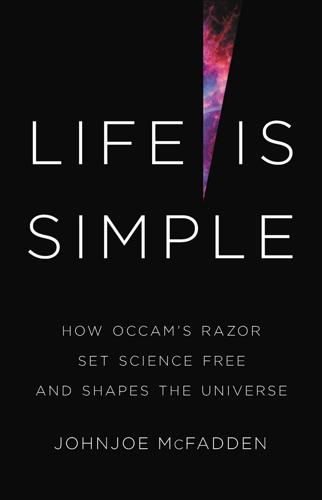
Life Is Simple: How Occam's Razor Set Science Free and Shapes the Universe
by
Johnjoe McFadden
Published 27 Sep 2021
It was probably at Olomouc where Johann acquired an interest in heredity, as its dean of natural sciences, Johann Nestler, had performed his own animal- and plant-breeding experiments. Theresia’s dowry was not however bottomless so to continue his education Mendel entered St Thomas’s Abbey in Brno in 1843 as a novice friar. There he adopted the name Gregor. As he later wrote, ‘my circumstances decided my vocational choice’. Gregor Mendel was first trained as a priest and given his own parish but, in a 1849 letter to the local bishop, Abbot Cyril Napp admits of Mendel that: ‘He is very diligent in the study of sciences but much less fitted for work as a parish priest.’ The abbot sent the scientifically minded friar to the University of Vienna where he studied physics, under Christian Doppler, famous for discovering the Doppler effect.
…
R., and Berry, A., The Malay Archipelago (Penguin, 2014). Chapter 15: Of Peas, Primroses, Flies and Blind Rodents 1. Wallace, A. R., Mimicry, and Other Protective Resemblances Among Animals (Read Books Limited, 2016). 2. Vorzimmer, P., ‘Charles Darwin and Blending Inheritance’, Isis, 54, 371–90 (1963). 3. De Castro, M., ‘Johann Gregor Mendel: Paragon of Experimental Science’, Molecular Genetics & Genomic Medicine, 4, 3 (2016). 4. Mendel, G., Experiments on Plant Hybrids (1866), translation and commentary by Staffan Müller-Wille and Kersten Hall, British Society for the History of Science Translation Series (2016), http://www.bshs.org.uk/bshs-translations/mendel. 5.
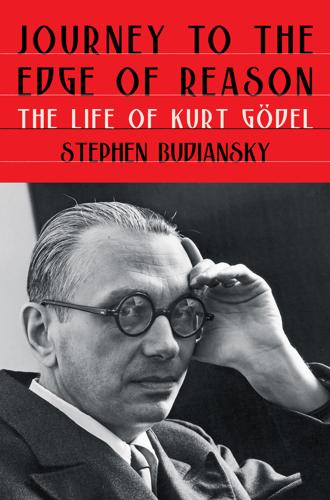
Journey to the Edge of Reason: The Life of Kurt Gödel
by
Stephen Budiansky
Published 10 May 2021
The Viennese-born Ludwig von Boltzmann, one of the giants of physical chemistry, developed the theory of statistical mechanics, which relates the statistical behavior of atoms to physical properties of matter such as heat capacity of a metal or pressure of a gas. And from Gödel’s hometown of Brünn came the geneticist monk Gregor Mendel and the experimental physicist Ernst Mach, whose name would be immortalized in the unit of the speed of sound in recognition of his exploration of supersonic dynamics—which led him along the way to the development of high-speed photography, which he used to capture extraordinary images of bullets in flight and their attendant shockwaves.
…
A large entrance hall on the first floor was paneled in natural wood and furnished in modern good taste with Jugendstil furniture, the seats of the chairs covered in the Arts-and-Crafts prints of the turn-of-the-century Viennese movement that evoked and celebrated the handcrafts of the pre-industrial age that Brünn had led the world in destroying. The Gödel villa on Spielberggasse (now Pellicova) HERR WARUM Science and progress were in the very air of Brünn. A ten-minute walk down the hill from the Gödel villa was the Augustinian abbey of Altbrünn, where Gregor Mendel spent a decade hybridizing and meticulously sorting and counting the blossoms and pods of 10,000 pea plants, laying the foundation of modern genetics. The 1910 dedication of a marble statue of Mendel, erected “by the friends of science” in the square in front of his monastery garden, brought famous biologists from across Europe to the city.
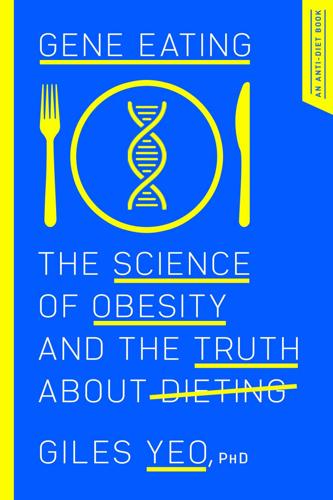
Gene Eating: The Science of Obesity and the Truth About Dieting
by
Giles Yeo
Published 3 Jun 2019
In particular, they both ate voraciously (explaining their spherical geometry) and were both infertile, and it was apparent by the way these characteristics were inherited that these were the result of mutations in single genes. GENETICS ‘101’ Most of us, when we were introduced to the concept of genetics at school, would have learnt about Mendel and his peas. Gregor Mendel, a 19th-century Augustinian friar and a scientist, is widely considered to be the father of modern genetics. He worked out the basic principles of genetics by breeding pea plants and observing how seven different characteristics (plant height, pod shape and colour, seed shape and colour, and flower position and colour) were inherited.
…
The key part of the experiment, and how he figured out what was happening, came when he bred the yellow offspring from the first cross together (Cross 2 in the figure). What he found was that three-quarters of the offspring from this second cross were yellow, while the green-coloured peas re-appeared, but only in one quarter of the offspring. He saw similar results in all of the seven characteristics that he was studying. FIGURE 3 Gregor Mendel’s pea-breeding experiments, establishing the concept of dominant and recessive genes He deduced two fundamental principles from these breeding experiments. First, he worked out that each of the pea plant’s traits had to be determined by two copies of some invisible factor: these would later be called ‘genes’, one coming from each parent plant.
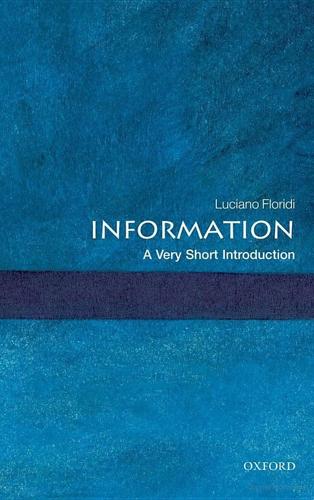
Information: A Very Short Introduction
by
Luciano Floridi
Published 25 Feb 2010
Genetic information Genetics is the branch of biology that studies the structures and processes involved in the heredity and variation of the genetic material and observable traits (phenotypes) of living organisms. Heredity and variations have been exploited by humanity since antiquity, for example to breed animals. But it was only in the 19th century that Gregor Mendel (1822-1884), the founder of genetics, showed that phenotypes are passed on, from one generation to the next, through what were later called genes. In 1944, in a brilliant book based on a series of lectures, entitled What Is Life?, the physics Nobel laureate Erwin Schrodinger (1887-1961) outlined the idea of how genetic information might be stored.
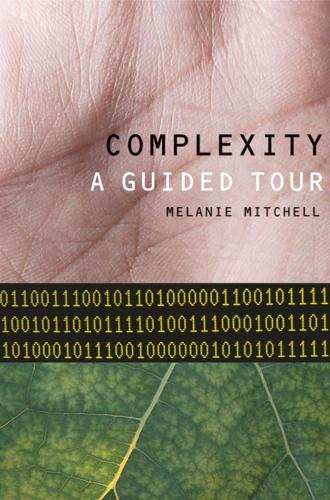
Complexity: A Guided Tour
by
Melanie Mitchell
Published 31 Mar 2009
Mendel and the Mechanism of Heredity A major issue not explained by Darwin’s theory was exactly how traits are passed on from parent to offspring, and how variation in those traits—upon which natural selection acts—comes about. The discovery that DNA is the carrier of hereditary information did not take place until the 1940s. Many theories of heredity were proposed in the 1800s, but none was widely accepted until the “rediscovery” in 1900 of the work of Gregor Mendel. Mendel was an Austrian monk and physics teacher with a strong interest in nature. Having studied the theories of Lamarck on the inheritance of acquired traits, Mendel performed a sequence of experiments, over a period of eight years, on generations of related pea plants to see whether he could verify Lamarck’s claims.
…
Mendel’s long years of experiments revealed several things that are still considered roughly valid in modern-day genetics. First, he found that the plants’ offspring did not take on any traits that were acquired by the parents during their lifetimes. Thus, Lamarckian inheritance did not take place. Gregor Mendel, 1822–1884 (From the National Library of Medicine) [http://wwwils.nlm.nih.gov/visibleproofs/galleries/ technologies/dna.html]. Second, he found that heredity took place via discrete “factors” that are contributed by the parents, one factor being contributed by each parent for each trait (e.g., each parent contributes either a factor for tall stems or dwarf stems).
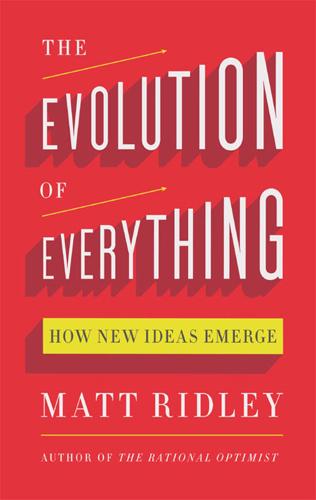
The Evolution of Everything: How New Ideas Emerge
by
Matt Ridley
As Francis Crick pondered of his partner in the elucidation of the double helix, James Watson: ‘If Jim had been killed by a tennis ball, I am reasonably sure I would not have solved the structure alone, but who would?’ There were plenty of candidates: Maurice Wilkins, Rosalind Franklin, Raymond Gosling, Linus Pauling, Sven Furberg, and others. The double helix and the genetic code would not have remained hidden for long. Gregor Mendel, the father of genetics, is an interesting exception to the rule of simultaneous discovery. His revelation of independently assorting, apparently indivisible particles of inheritance (genes) stood alone in the 1860s – though you can make a case that a chap called Thomas Knight had glimpsed the insight a few decades before, when he noticed that violet-flowered peas crossed with white-flowered peas produced mainly violet-flowered offspring.
…
Even progressives with no ostensible ties to eugenics worked closely with champions of the cause. There was simply no significant stigma against racist eugenics in progressive circles.’ It mattered little that scientific support for this policy was weak in the extreme. In fact the discoveries of Gregor Mendel, which became known to the world in 1900, ought to have killed eugenics stone dead. Particulate inheritance and recessive genes made the idea of preventing the deterioration of the human race by selective breeding greatly more difficult and impractical. How were those in charge of breeding the human race supposed to spot the heterozygotes who carried but did not express some essence of imbecility or unfitness?

As the Future Catches You: How Genomics & Other Forces Are Changing Your Work, Health & Wealth
by
Juan Enriquez
Published 15 Feb 2001
And perhaps the most important challenge we will face in the twenty-first century … is how … and when … to apply this knowledge. (Harvard, with its classic modesty, has located its biochemistry, genomics, and molecular-biology labs just off Divinity Avenue.)1 It took nearly a century and a half to start to read the language that determines all life processes. In the 1850s, an Austrian monk, Gregor Mendel, began experimenting in the garden of his monastery.2 He used the pollen of some plants to carefully fertilize other plants … Mostly peas. By carrying out these experiments deliberately and carefully recording the results, Mendel was able to observe that various traits present in grandparents, mothers, and fathers could be passed on to offspring … And he could catalog which traits tended to dominate … Thus giving rise to a new discipline … Which we now call genetics.
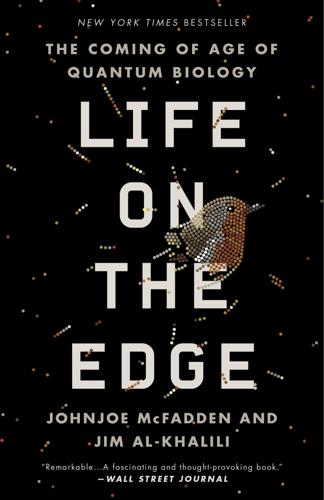
Life on the Edge: The Coming of Age of Quantum Biology
by
Johnjoe McFadden
and
Jim Al-Khalili
Published 14 Oct 2014
In his “51st Exercitation” of 1653, the English surgeon William Harvey wrote: Although it be a known thing subscribed by all, that the foetus assumes its origin and birth from the male and female, and consequently that the egge is produced by the cock and henne and the chicken out of the egge, yet neither the schools of physicians nor Aristotle’s discerning brain have disclosed the manner how the cock and its seed doth mint and coine the chicken out of the egge. Part of the answer was provided two centuries later by the Austrian monk and plant scientist Gregor Mendel, who around 1850 was breeding peas in the garden of the Augustinian abbey at Brno. His observations led him to propose that traits such as flower color or pea shape were controlled by heritable “factors” that could be transmitted, unchanged, from one generation to the next. Mendel’s “factors” thereby provided a repository of heritable information that allowed peas to retain their character through hundreds of generations—or through which “the cock and its seed doth mint and coine the chicken out of the egge.”
…
He never really resolved this problem in his lifetime. Indeed, in later editions of the Origin of Species he even resorted to a form of Lamarckian evolutionary theory to generate heritable minor variation. Part of the solution had already been discovered during Darwin’s lifetime by the Czech monk and plant breeder Gregor Mendel, whom we met in chapter 2. Mendel’s experiments with peas demonstrated that small variations in pea shape or color were indeed stably inherited: that is—crucially—these traits did not blend but bred true generation after generation, though often skipping generations if the character was recessive rather than dominant.
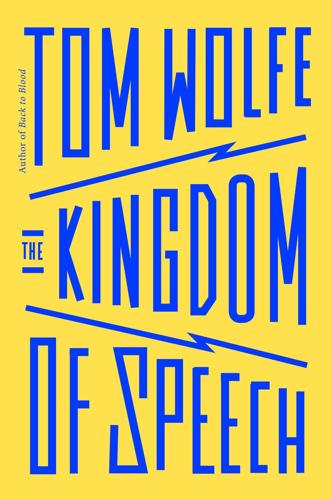
The Kingdom of Speech
by
Tom Wolfe
Published 30 Aug 2016
See also “Review of Descent of Man,” Athenaeum 3 (April 1871), and “Review of The Descent of Man,” Edinburgh Review (July–October 1871). 74 For more information about the Philological Society, see Fiona Marshall, “History of the Philological Society: The Early Years,” available from www.philsoc.org.uk/history.asp. 75 Société de Linguistique de Paris. “Statuts de 1866, Art. 2.” Available at: http://www.slp-paris.com/spip.php?article5. 76 See Barton, “‘An Influential Set of Chaps.’” 77 Quoted in Paul C. Mangelsdorf, foreword to Experiments in Plant Hybridisation by Gregor Mendel (Cambridge, MA: Harvard University Press, 1965). This note was kept by one of Mendel’s fellow monks, Franz Barina. 78 Theodosius Dobzhansky, “Nothing in Biology Makes Sense Except in the Light of Evolution,” The American Biology Teacher 35, no. 3 (March 1973), 125–29. 79 See Morris Swadesh, “Sociologic Notes on Obsolescent Languages,” International Journal of American Linguistics 14, no. 4 (October 1948), 226–35, and Stanley Newman, “Morris Swadesh (1909–1967),” Language 43, no. 4 (December 1967), 948–57. 80 Roger Hilsman, American Guerrilla: My War Behind Japanese Lines (Washington, DC: Potomac Books, 2005), 143. 81 Morris Swadesh, “Towards Greater Accuracy in Lexicostatistical Dating,” International Journal of American Linguistics 21, no. 2 (April 1955), 121–37. 82 Edwin G.

Hacking the Code of Life: How Gene Editing Will Rewrite Our Futures
by
Nessa Carey
Published 7 Mar 2019
They hoped the characteristic they were interested in ‘bred true’, in other words that it showed up in the offspring, or even was better in the next generation. But they had no idea how these characteristics were passed on from parents. The first step in formalising a data-based theory for this came from the Augustinian friar Gregor Mendel, working in Saint Thomas’s Abbey in Brno, in what is today the Czech Republic. Mendel crossed different strains of peas very systematically and examined the offspring, counting characteristics such as smoothness or wrinkling of the peas. He determined that particular characteristics were passed on in a specific ratio, and to explain his findings he referred to invisible factors that governed the physical appearance.
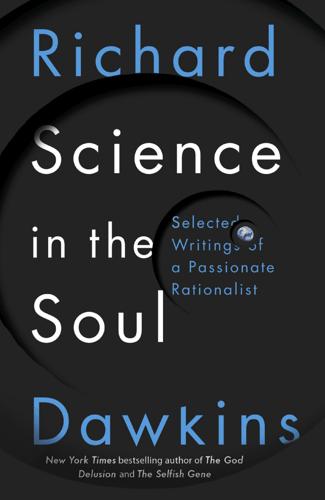
Science in the Soul: Selected Writings of a Passionate Rationalist
by
Richard Dawkins
Published 15 Mar 2017
Fortunately, human writing is digital, at least in the sense we care about here. And the same is true of the DNA books of ancestral wisdom that we carry around inside us. Genes are digital, and in the full sense not shared by nerves. Digital genetics was discovered in the nineteenth century, but Gregor Mendel was ahead of his time and ignored. The only serious error in Darwin’s world-view derived from the conventional wisdom of his age, that inheritance was ‘blending’ – analogue genetics. It was dimly realized in Darwin’s time that analogue genetics was incompatible with his whole theory of natural selection.
…
In the United States today, a person will be called ‘African American’ even if only, say, one of his eight great-grandparents was of African descent. Colin Powell and Barack Obama are described as black. They do have black ancestors, but they also have white ancestors, so why don’t we call them white? It is a weird convention that the descriptor ‘black’ behaves as the cultural equivalent of a genetic dominant. Gregor Mendel, the father of genetics, crossed wrinkled and smooth peas and the offspring were all smooth: smoothness is ‘dominant’. When a white person breeds with a black person the child is intermediate but is labelled ‘black’: the cultural label is transmitted down the generations like a dominant gene, and this persists even to cases where, say, only one out of eight great-grandparents was black and it may not show in skin colour at all.

A Dominant Character
by
Samanth Subramanian
Published 27 Apr 2020
—Gilbert Wynant, to his sister, in The Thin Man In 1901, when Jack was 8 years old, his father took him to the Oxford University Junior Scientific Club, where the biologist Arthur Darbishire was giving a lecture on Mendel’s laws of inheritance. The explanatory power of these laws was only just being appreciated, and they were transforming the state of science in the Western world. Gregor Mendel, the Augustinian friar, had conducted his experiments on pea plants five decades earlier in his abbey in Brünn, now a town called Brno in the Czech Republic. First in a kitchen garden and then in a two-room glass hothouse, he had planted 34 true-breeding strains of peas—strains that always produced offspring whose every trait matched that of the parent.
…
Hawks, John, Eric T. Wang, Gregory M. Cochran, Henry C. Harpending, and Robert K. Moyzis. “Recent Acceleration of Human Adaptive Evolution.” Proceedings of the National Academy of Sciences 104, no. 52 (December 2007): 20753–58. Henig, Robin Marantz. The Monk in the Garden: The Lost and Found Genius of Gregor Mendel, the Father of Genetics. New York: Houghton Mifflin Company, 2000. Hermiston, Roger. All Behind You, Winston: Churchill’s Great Coalition 1940–45. London: Aurum Press, 2016. Hobsbawm, Eric. Revolutionaries. New York: The New Press, 2001. Howard, Victor. The MacKenzie-Papineau Battalion: The Canadian Contingent in the Spanish Civil War.
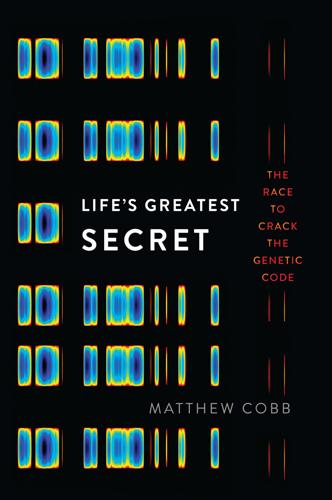
Life's Greatest Secret: The Race to Crack the Genetic Code
by
Matthew Cobb
Published 6 Jul 2015
But unlike them, Napp was able to organise and encourage a cohort of bright intellectuals in his monastery to explore the question, a bit like a modern university department focuses on a particular topic. This research programme reached its conclusion in 1865, when Napp’s protégé, a monk named Gregor Mendel, gave two lectures in which he showed that, in pea plants, inheritance was based on factors that were passed down the generations. Mendel’s discovery, which was published in the following year, had little impact and Mendel did no further work on the subject; Napp died shortly afterwards, and Mendel devoted all his time to running the monastery until his death in 1884.
…
Hao, B., Gong, W., Ferguson, T. K. et al., ‘A new UAG-encoded residue in the structure of a methanogen methyltransferase’, Science, vol. 296, 2002, pp. 1462–6. Hargittai, I., Candid Science II: Conversations with Famous Biomedical Sciences, London, Imperial College Press, 2002. Hartl, D. L. and Orel, V., ‘What did Gregor Mendel think he discovered?’, Genetics, vol. 131, 1992, pp. 245–53. Hartl, F. U., Bracher, A. and Hayer-Hartl, M., ‘Molecular chaperones in protein folding and proteostasis’, Nature, vol. 475, 2011, pp. 324–32. Hatfield, D. L. and Gladyshev, V. N., ‘How selenium has altered our understanding of the genetic code’, Molecular and Cell Biology, vol. 22, 2002, pp. 3565–76.
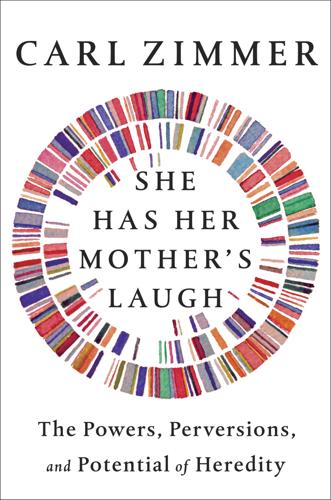
She Has Her Mother's Laugh
by
Carl Zimmer
Published 29 May 2018
A monk named Matthew Klácel ran experiments in another garden—at least until his radical philosophy on nature forced him to flee to the United States. When young men entered the Augustinian order, Napp encouraged them to immerse themselves in the latest scientific advances. One of the young men in whom Napp took a special interest was a poor farmer’s son named Gregor Mendel. Mendel’s first job at the priory was to teach languages, math, and science in a local school. He proved so good at it that Napp sent him to the University of Vienna for more training. Mendel took a course in physics there in which he learned how to design careful experiments, and another in botany, where he learned about the long-running debate over hybrid plants and whether two species could cross to produce a new species.
…
For now, the experience of the disease is a tense negotiation between heredity and the world in which it unfolds. PART II Wayward DNA CHAPTER 5 An Evening’s Revelry IN 1901, WILLIAM BATESON sent an urgent report to the Royal Society on “the facts of heredity.” Those facts, Bateson explained, had just been thrown into sharp relief with the rediscovered, newly appreciated work of Gregor Mendel. Bateson and other scientists were confirming the patterns that Mendel had observed. Those patterns were so trustworthy and so profound, Bateson said, that they deserved one of the loftiest titles in science: “Mendel’s Law.” A scientific law predicts some aspect of the universe, usually with a short, sweet equation.
…
Gitschier, Jane. 2010. “The Gift of Observation: An Interview with Mary Lyon.” PLOS Genetics 6:e1000813. Glass, Bentley. 1980. “The Strange Encounter of Luther Burbank and George Harrison Shull.” Proceedings of the American Philosophical Society 124:133–53. Gliboff, Sander. 2013. “The Many Sides of Gregor Mendel.” In Outsider Scientists: Routes to Innovation in Biology. Edited by Oren Harman and Michael R. Dietrich. Chicago: University of Chicago Press. Goddard, Henry H. 1908. “A Group of Feeble-Minded Children with Special Regard to Their Number Concepts.” Supplement to the Training School 2:1–16. ———. 1910a.
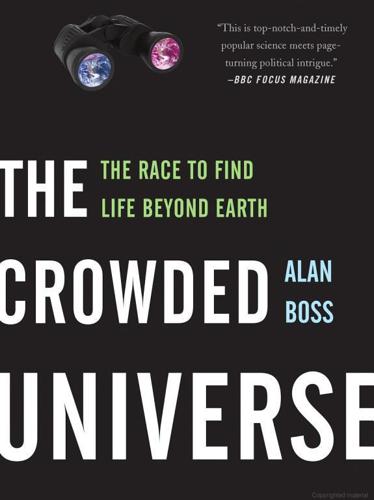
The Crowded Universe: The Search for Living Planets
by
Alan Boss
Published 3 Feb 2009
The zenith of Doppler’s career came in 1850, when he was appointed founding director of the Institute of Physics at Vienna’s Imperial University. As director, he was responsible for deciding which candidates would be admitted for study at the university. (One candidate he turned down was Johann Gregor Mendel, who later gained admission to the university through a different department and became a pioneer of genetics research. Mendel’s mathematical skills were not considered on a par with what Doppler required of a physicist, to the everlasting benefit of modern genetics.) The Doppler effect that Walker and Campbell sought to measure was quite small.

Coming of Age in the Milky Way
by
Timothy Ferris
Published 30 Jun 1988
Without the stability imparted by genes, innovative mutations would be diluted away like drops of blood in the ocean, before they had time to spread to any significant numbers of individuals. In such a situation natural selection might occur, but it could scarcely account for the origin of species. The first evidence of the existence of genes did not appear until 1866, eight years after Darwin was obliged to publish The Origin of Species, when the Moravian monk Gregor Mendel published the results of his extensive experiments with green peas in the garden of an Augustinian monastery—results that demonstrated the requisite persistence of the quanta of heredity—and Mendel’s findings were in any event universally ignored until attention was called to them in 1900, by which time Darwin was dead.
…
Time: 1864 Noteworthy Events: William Huggins obtains the first spectrum of a nebula, finds that it is composed of gas. Noteworthy Events: James Clerk Maxwell publishes a unified theory of electricity and magnetism, portraying both as aspects of electromagnetic force. Time: 1865 Noteworthy Events: Gregor Mendel announces results of his research in genetics, revealing key to persistence of unchanging traits in living things, a critical missing element in Darwinism. Time: 1874, 1882 Noteworthy Events: Transits of Venus observed with new, more precise instruments, improving estimates of the astronomical unit.

The Code Breaker: Jennifer Doudna, Gene Editing, and the Future of the Human Race
by
Walter Isaacson
Published 9 Mar 2021
Driven by a passion to understand how nature works and by a competitive desire to turn discoveries into inventions, she would help make what Watson, with his typical grandiosity cloaked in the pretense of humility, would later tell her was the most important biological advance since the double helix. Darwin Mendel CHAPTER 2 The Gene Darwin The paths that led Watson and Crick to the discovery of DNA’s structure were pioneered a century earlier, in the 1850s, when the English naturalist Charles Darwin published On the Origin of Species and Gregor Mendel, an underemployed priest in Brno (now part of the Czech Republic), began breeding peas in the garden of his abbey. The beaks of Darwin’s finches and the traits of Mendel’s peas gave birth to the idea of the gene, an entity inside of living organisms that carries the code of heredity.1 Darwin had originally planned to follow the career path of his father and grandfather, who were distinguished doctors.
…
But he soon realized, as did others, that this would mean that any new beneficial trait would be diluted over generations rather than be passed along intact. Darwin had in his personal library a copy of an obscure scientific journal that contained an article, written in 1866, with the answer. But he never got around to reading it, nor did almost any other scientist at the time. Mendel The author was Gregor Mendel, a short, plump monk born in 1822 whose parents were German-speaking farmers in Moravia, then part of the Austrian Empire. He was better at puttering around the garden of the abbey in Brno than being a parish priest; he spoke little Czech and was too shy to be a good pastor. So he decided to become a math and science teacher.
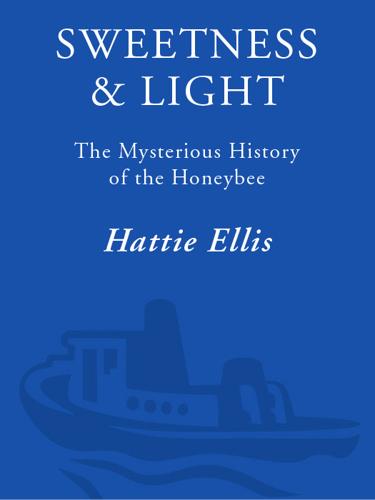
Sweetness and Light: The Mysterious History of the Honeybee
by
Hattie Ellis
Published 25 Apr 2006
Brother Adam’s idea was to build up strong colonies that could develop a natural resistance. His work enabled him to send healthy queens around the country; thanks to him, British beekeepers could restock and recover from this devastating disease, which had killed an estimated 90 percent of their colonies. Brother Adam was influenced by the ideas of Gregor Mendel (1822-1884), the Austrian monk who discovered the laws of heredity. Mendel had tried to apply his theories to breeding insects, but he knew more about peas than he did about bees. His hives had been kept side-by-side in the old-fashioned bee sheds that are still in use in Germany today; Brother Adam, with his practical apiarian knowledge, knew that the breeds should have been kept separate in order to ensure pure strains.
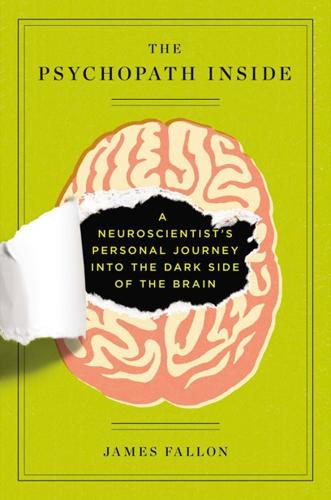
The Psychopath Inside: A Neuroscientist's Personal Journey Into the Dark Side of the Brain
by
James Fallon
Published 30 Oct 2013
Therefore, statements that the warrior gene “causes” aggression, violence, and retaliation raises the hackles of geneticists, since there are probably dozens or more “warrior genes” in people who are particularly violent. But even the simple diseases (called Mendelian diseases, after the godfather of genetics, Gregor Mendel)—like cystic fibrosis, which is caused by a single mutation in the gene that codes for the chloride channel in cell membranes regulating water balance in the lungs and gut and glands—can appear as fifty different disorders in fifty different individuals with the disease. In the case of cystic fibrosis, that single chloride channel mutation affects other cellular and organ components.

What About Me?: The Struggle for Identity in a Market-Based Society
by
Paul Verhaeghe
Published 26 Mar 2014
Anglo-Saxon scholars and scientists were none too keen on the French, even back then, and the ruling classes were terrified that revolutionary notions might cross the Channel, along with guillotines and sans-culottes. Evolution? It might give people ideas! It took another half-century before Darwin published his beautifully argued theory, causing the heavenly gates to cave in at long last. Ironically, the final sledgehammer blows were dealt by an obscure eastern European monk, Gregor Mendel, the significance of whose experiments was only to be fully realised at the beginning of the 20th century. Inherited characteristics are passed on by the parents; each generation represents a new combination, and, every so often, unforeseen changes — mutations — take place. Evolution means change.

Life at the Speed of Light: From the Double Helix to the Dawn of Digital Life
by
J. Craig Venter
Published 16 Oct 2013
Charles Darwin’s grandfather, Erasmus Darwin (1731–1802), a formidable intellectual force in eighteenth-century England, formulated one of the first formal theories of evolution in the first volume of Zoonomia; or the Laws of Organic Life2 (1794–1796), in which he stated that “all living animals have arisen from one living filament.” Classical genetics, as we understand it, has its origin in the 1850s and 1860s, when the Silesian friar Gregor Mendel (1822–1884) attempted to draw up the rules of inheritance governing plant hybridization. But it is only in the past seventy years that scientists have made the remarkable discovery that the “filament” that Erasmus Darwin proposed is in fact used to program every organism on the planet with the help of molecular robots.
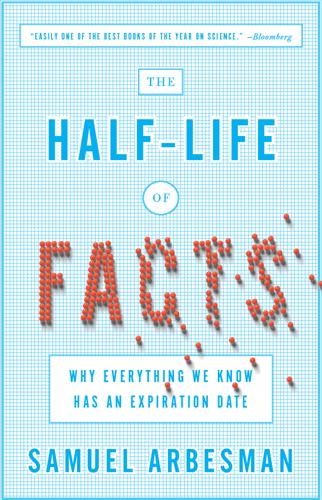
The Half-Life of Facts: Why Everything We Know Has an Expiration Date
by
Samuel Arbesman
Published 31 Aug 2012
But Green, the Shakespeare of mathematical physics, is not the only example of these sorts of people. There are many instances when knowledge is not recognized or not combined, because it’s created by people who are simply too far ahead of their time, or who come from backgrounds that are so different from what is traditionally expected for scientific insight. For example, Gregor Mendel, now recognized as the father of genetics, died without being known at all. It wasn’t until years after his death that the Augustinian monk’s work was rediscovered, due to other scientists doing similar experiments and stumbling upon his findings. Yet he laid the foundation for the concepts of genes and the mathematics of the heritability of discrete traits.

12 Bytes: How We Got Here. Where We Might Go Next
by
Jeanette Winterson
Published 15 Mar 2021
That was great for his rich friends, who carried on cramming 15 people plus dogs and a pig into basement dwellings by the factory, while condemning them all for neglecting their children and spending every penny on gin. No connection whatsoever. They were a bad lot. Galton liked the idea of bad lots. He was influenced and impressed by the work of Gregor Mendel, an Austrian monk, who spent many years growing and studying peas in the monastery garden where he lived. Mendel discovered dominant and recessive genes, and learned how traits can be suppressed or encouraged through selective breeding – though this was something stock breeders had long practised, but without a formula behind it.
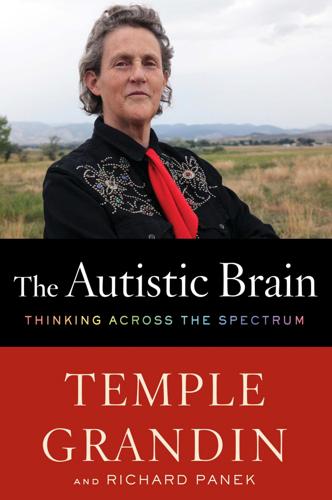
The Autistic Brain: Thinking Across the Spectrum
by
Temple Grandin
and
Richard Panek
Published 15 Feb 2013
She had the same concepts and facts as everyone else, but she saw them in a “new relation not previously seen.” I can think of plenty of examples of this sort of creativity from my own life. I remember when I was a student at Franklin Pierce College, and I took a course on genetics. The professor, Mr. Burns, taught us the usual model of genetics developed by Gregor Mendel in the nineteenth century—that each parent contributes half the genes in an offspring and that the way species gradually change is through a long series of random genetic mutations. That didn’t make sense to me. Sure, it was part of the explanation. But it couldn’t be the whole explanation. How do random mutations explain that when you take a Border collie and a springer spaniel and breed them, you get puppies that look like they’re a mixture of the two breeds, but they’re not exactly half and half?
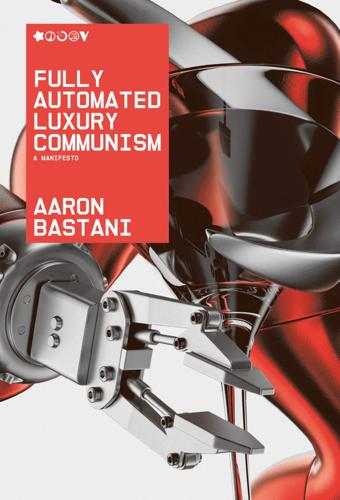
Fully Automated Luxury Communism
by
Aaron Bastani
Published 10 Jun 2019
Indeed, we have knowingly altered the genome of various species for 12,000 years through selective breeding – a central innovation of the First Disruption. That gave us creatures fit for labour and crops like wheat which were hardy, easy to grow and nutritious. While we gained mastery in these fields before we had cities, writing or mathematics it wasn’t until the nineteenth century, through the work of Gregor Mendel, that we understood precisely how such mechanisms function. After Mendel, however, understanding genetic inheritance increasingly resembled a science rather than an art. By the middle of the twentieth century our knowledge of the field was so impressive that humans grasped how they might be able to accelerate a process seen throughout nature – evolution – inside a laboratory.

The Genius Within: Unlocking Your Brain's Potential
by
David Adam
Published 6 Feb 2018
That assumed, of course, feeble-minded parents would have feeble-minded children; that cognitive ability and disability would slide through the generations as easily as red hair or blue eyes. That was an assumption the eugenicists were happy to make, indeed they wrote endless books and pamphlets to make the case, and in doing so they unfairly demonized families and even entire communities. Using the newly rediscovered work on early genetics by the monk Gregor Mendel – who crossed pea plants and then worked out the basic laws of inheritance – the eugenicists of the early twentieth century said intelligence was a trait passed on from parent to child. And on this point they were mostly right. For all of the controversy then and now over the genetics of intelligence, the basic science is pretty simple.

How Many Friends Does One Person Need? Dunbar’s Number and Other Evolutionary Quirks
by
Robin Dunbar
and
Robin Ian MacDonald Dunbar
Published 2 Nov 2010
In most traits, you tend to resemble one or the [Page 14] other, so that by and large you end up as a kind of mosaic – your mother’s nose, your father’s chin, perhaps even your grandfather’s hair through some quirk of a throw-back to earlier generations. All this is pretty well understood, thanks mainly to the pioneering efforts in the 1850s of that indefatigable scientist-monk, Gregor Mendel, the founding father of modern genetics. Now, one might expect that you would be a random mosaic of bits inherited from your two parents, and that these would vary between individuals – half the population would inherit a particular trait from their fathers, and the rest would inherit it from their mothers.
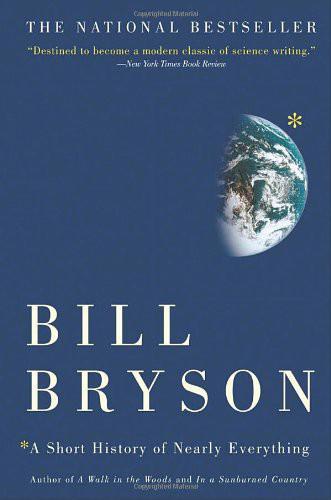
A Short History of Nearly Everything
by
Bill Bryson
Published 5 May 2003
Huxley likewise parodied the younger Haldane in his novel Antic Hay, but also used his ideas on genetic manipulation of humans as the basis for the plot of Brave New World. Among many other achievements, Haldane played a central role in marrying Darwinian principles of evolution to the genetic work of Gregor Mendel to produce what is known to geneticists as the Modern Synthesis. Perhaps uniquely among human beings, the younger Haldane found World War I “a very enjoyable experience” and freely admitted that he “enjoyed the opportunity of killing people.” He was himself wounded twice. After the war he became a successful popularizer of science and wrote twenty-three books (as well as over four hundred scientific papers).
…
Lucky flukes might arise from time to time, but they would soon vanish under the general impulse to bring everything back to a stable mediocrity. If natural selection were to work, some alternative, unconsidered mechanism was required. Unknown to Darwin and everyone else, eight hundred miles away in a tranquil corner of Middle Europe a retiring monk named Gregor Mendel was coming up with the solution. Mendel was born in 1822 to a humble farming family in a backwater of the Austrian empire in what is now the Czech Republic. Schoolbooks once portrayed him as a simple but observant provincial monk whose discoveries were largely serendipitous—the result of noticing some interesting traits of inheritance while pottering about with pea plants in the monastery's kitchen garden.

The Locavore's Dilemma
by
Pierre Desrochers
and
Hiroko Shimizu
Published 29 May 2012
Monsanto is not known for being nimble in its relations with the public, but the company made sure that none of the donated seed was genetically altered. That gesture wasn’t enough; protests quickly erupted all over Haiti and the U.S. You would have thought Monsanto was passing out free cigarettes to teenagers. “Peasant groups” in Haiti marched under banners of “Down with GMO and hybrid seeds.” Hybridization has been around since Gregor Mendel experimented with peas in the 1850s. Hybrid crops have saved the lives of billions of hungry people. Farmers in the U.S. began adopting hybrid seeds in the 1920s, and hybrids have increased yields for every crop that lends itself to hybridization. Donating hybrid seeds is not exactly pushing the envelope of food or farming technology, but breeding and producing hybrid seed is a complicated process typically done by large firms and never by individual farmers.
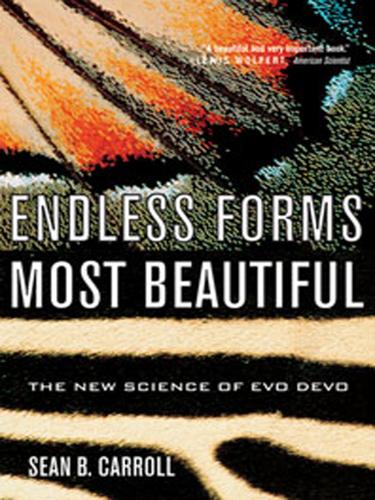
Endless Forms Most Beautiful: The New Science of Evo Devo
by
Sean B. Carroll
Published 10 Apr 2005
Because embryology was stalled for so long, it played no part in the so-called Modern Synthesis of evolutionary thought that emerged in the 1930s and 1940s. In the decades after Darwin, biologists struggled to understand the mechanisms of evolution. At the time of The Origin of Species , the mechanism for the inheritance of traits was not known. Gregor Mendel’s work was rediscovered decades later and genetics did not prosper until well into the 1900s. Different kinds of biologists were approaching evolution at dramatically different scales. Paleontology focused on the largest time scales, the fossil record, and the evolution of higher taxa. Systematists were concerned with the nature of species and the process of speciation.

Erwin Schrodinger and the Quantum Revolution
by
John Gribbin
Published 1 Mar 2012
Other Schrödinger quotes in this section come from the same source unless otherwise indicated. Chapter Twelve What Is Life? Schrödinger had a lifelong interest in the process of heredity, having learned about biology from his botanist father and read widely about evolutionary ideas during his time as an undergraduate, when the recently rediscovered work of Gregor Mendel (1822–84) on inheritance was being widely discussed. His interests in philosophy and Eastern religion, addressing the nature of the mind and soul, and questions such as the possible existence of a group unconscious, formed part of the same tapestry of thought. To Schrödinger, the continuity of the genetic line is a kind of immortality, and he always regretted never having a son.
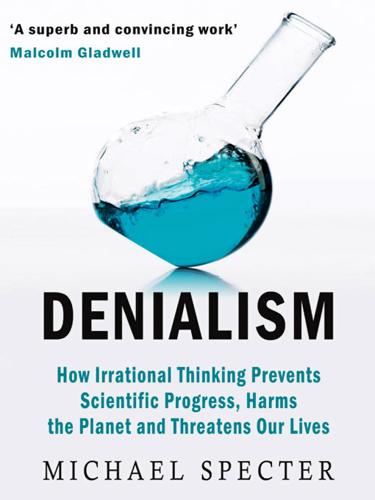
Denialism: How Irrational Thinking Hinders Scientific Progress, Harms the Planet, and Threatens Our Lives
by
Michael Specter
Published 14 Apr 2009
Our ability to modify the smallest components of life through molecular biology has endowed humans with a power that even those who exercise it most proficiently cannot claim to fully comprehend. Man’s mastery over nature has been predicted for centuries—Bacon insisted on it, Blake feared it profoundly. Little more than one hundred years have passed, however, since Gregor Mendel demonstrated that the defining characteristics of a pea plant—its shape, size, and the color of the seeds, for example—are transmitted from one generation to the next in ways that can be predicted, repeated, and codified. Since then, the central project of biology has been to break that code and learn to read it—to understand how DNA creates and perpetuates life.
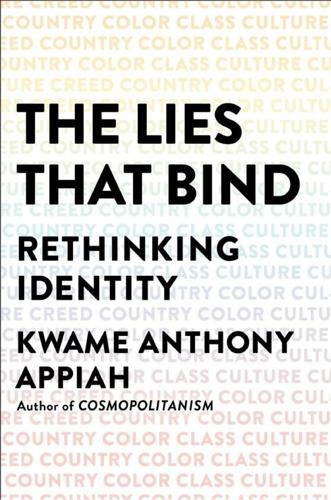
The Lies That Bind: Rethinking Identity
by
Kwame Anthony Appiah
Published 27 Aug 2018
One illustrious discipline after another was recruited to give content to color. And so, in the course of the nineteenth century, in a hubbub of contentious argument, the modern race concept took hold. MENDELISM This theory of the racial essence developed before modern genetics. In 1866, a Czech monk by the name of Gregor Mendel published his proposal that the particulate factors we now call “genes” explained the patterns in the inheritance of the characteristics of organisms.16 But the significance of his work would not be appreciated for another thirty years. Modern genetic theory, which treated our biological inheritance as the product of tens of thousands of individual factors, did not really begin until around 1900.
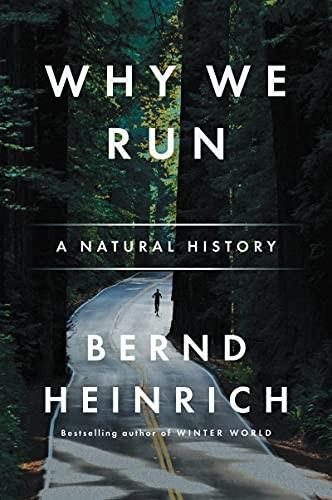
Why We Run: A Natural History
by
Bernd Heinrich
Published 6 May 2002
Anyday now, any hour, the geese’s haunting cries as they glide through the sky will signal the birds’ excitement as they, too, head south, arranged into long Vs. Like human runners following one another’s wind shadow, they take advantage of reduced air resistance to save energy. Almost everything we know about ourselves has been built on knowledge learned from other organisms: Gregor Mendel’s peas, George Beadle and Edward Tatum’s bread mold, Barbara McClintock’s corn, and Thomas Hunt Morgan’s fruit flies have taught us the basics of inheritance. Mice, rats, dogs, and monkeys have been the subject of studies that provide us with an endless knowledge of practically all our physiological functions.
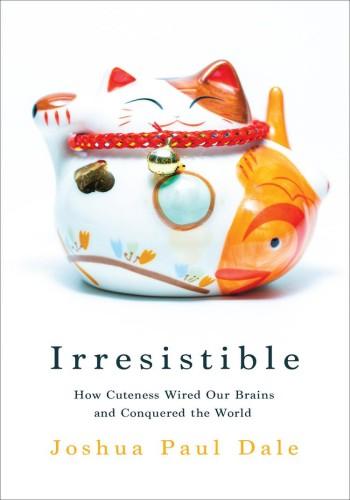
Irresistible: How Cuteness Wired our Brains and Conquered the World
by
Joshua Paul Dale
Published 15 Dec 2023
It seems that the biological mechanism responsible for both the whites of our eyes and our pets’ white socks may answer one of Darwin’s questions about domestication: how could these different traits appear if no one was deliberately selecting them? But this new hypothesis goes beyond explaining the similarities among domesticated animals to offer a completely different view of our place in the animal kingdom. It also places cuteness at the heart of being human. The neural crest Gregor Mendel’s pioneering work on pea plants showed that one gene can make a yellow plant while another can make one green, but we now know that some genes have many jobs. They can control not only different features of the body but also the timing at which development occurs. It all depends on which part of the body they regulate.35 A few weeks after conception, the embryos of all vertebrates develop special cells that appear where the spine will grow.
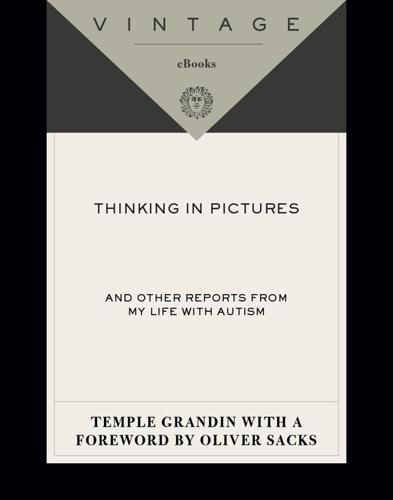
Thinking in Pictures: And Other Reports From My Life With Autism
by
Temple Grandin
Published 10 Jan 2006
Darwin wrote in his autobiography, Life and Letters, which was edited by his son Francis, “I was considered by all my masters and by my father as a very ordinary boy, rather below the common standard of intellect.” He found life at Cambridge University dull and did poorly in mathematics. Darwin's saving grace was his passion for collecting. This provided the motivation to go on his famous voyage on the Beagle, where he first formulated the theory of evolution. Gregor Mendel, the father of modern genetics, was unable to pass the exam to get a high school teaching license, according to Guinagh Kevin in his book Inspired Amateurs. Mendel failed the exam several times. He conducted his classic experiments in the corner of a monastery garden with pea plants. When he presented the results at his university thesis defense, he failed to get his degree.
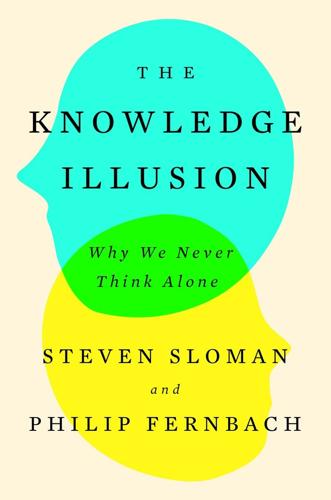
The Knowledge Illusion
by
Steven Sloman
Published 10 Feb 2017
Science is all about justification—coming to only those conclusions that can be justified. Justifications come in various forms. One way is through direct observation (using a microscope, we can actually see a father’s set of chromosomes pairing with a mother’s at conception). Another way is through inference (the original geneticist Gregor Mendel inferred the existence of chromosomes by observing how traits are passed from parents to offspring). But most conclusions in science aren’t based on either observation or inference. Instead, they are based on authority, on what is written down in a textbook or journal article or what your expert friend tells you.
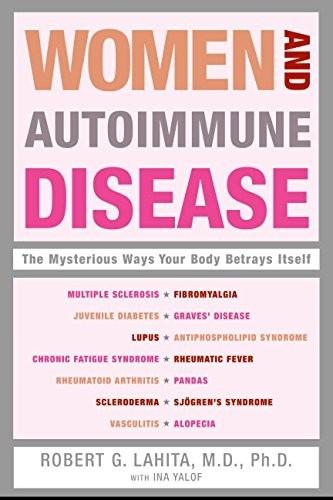
Women and Autoimmune Disease
by
Robert G. Lahita
Published 1 Jan 2004
They also act in the inflammation process and prepare antigens for recognition by other cells. MAJOR HISTOCOMPATIBILITY COMPLEX (MHC): another name for the immunity genes found on chromosome 6. The MHC is involved in the presentation of antigens to the T cells of the immune system so that they can be recognized. MENDELIAN: the traditional genetic inheritance as described by the monk Gregor Mendel. It is the one gene-one reaction principle. MIMICRY: when one molecule is confused for another that is closely related to it in structure. MRI (MAGNETIC RESONANCE IMAGING): a diagnostic method that uses a magnetic field to examine tissues in great detail. MRA: magnetic resonance angiography. Uses a magnetic field to examine the flow of blood.
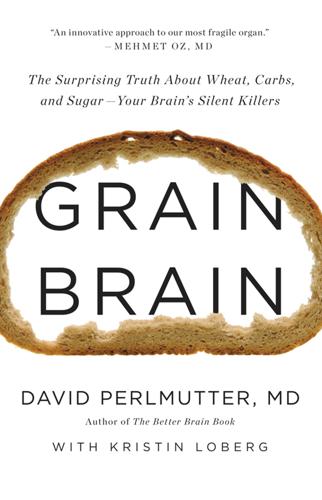
Grain Brain: The Surprising Truth About Wheat, Carbs, and Sugar--Your Brain's Silent Killers
by
David Perlmutter
and
Kristin Loberg
Published 17 Sep 2013
A GLUT OF GLUTEN IN MODERN FOOD If gluten is so bad, how have we managed to survive so long while eating it? The quick answer is that we haven’t been eating the same kind of gluten since our ancestors first figured out how to farm and mill wheat. The grains we eat today bear little resemblance to the grains that entered our diet about ten thousand years ago. Ever since the seventeenth century, when Gregor Mendel described his famous studies of crossing different plants to arrive at new varieties, we’ve gotten good at mixing and matching strains to create some wild progeny in the grain department. And while our genetic makeup and physiology haven’t changed much since the time of our ancestors, our food chain has had a rapid makeover during the past fifty years.

The End of College: Creating the Future of Learning and the University of Everywhere
by
Kevin Carey
Published 3 Mar 2015
Learning scientists at Carnegie Mellon are using the ACT-R model to make this dream a reality by developing “cognitive tutors” that use artificial intelligence to help people learn. Every tutor is built around a cognitive model of a particular subject. For example, any basic introductory genetics class will teach you how Gregor Mendel crossbred different kinds of pea plants and discovered that certain traits are inherited through genes. Which genes you inherit depend on a pair of 50/50 coin flips, one each from your father and mother, for each gene. Some genes, like blue eyes and blond hair, are recessive, expressing themselves only when both coin flips go the right way at the same time.
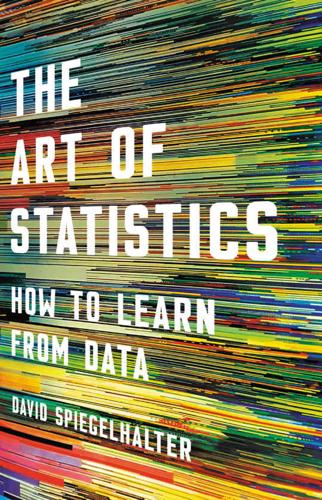
The Art of Statistics: How to Learn From Data
by
David Spiegelhalter
Published 2 Sep 2019
The appropriate handling of causation still remains contested within the field of statistics, whether it concerns pharmaceuticals or big ears, and without randomization it is rare to be able to draw confident conclusions. One imaginative approach takes advantage of the fact that many genes are spread essentially at random through the population, so it is as if we have been randomized to our specific version at conception. This is known as Mendelian randomization, after Gregor Mendel, who developed the modern idea of genetics.13 Other advanced statistical methods have been developed to try to adjust for potential confounders and so to get closer to an estimate of the actual effect of the exposure, and these are largely based on the important idea of regression analysis. And for this we must acknowledge, yet again, the fertile imagination of Francis Galton.
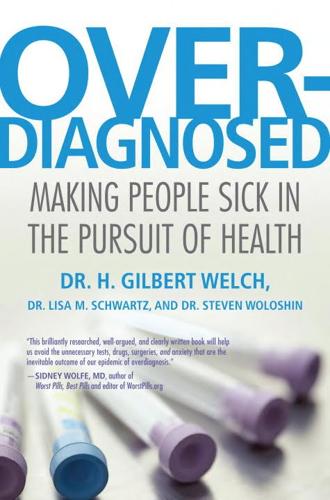
Overdiagnosed: Making People Sick in the Pursuit of Health
by
H. Gilbert Welch
,
Lisa M. Schwartz
and
Steven Woloshin
Published 18 Jan 2011
But we persist on focusing intently on early diagnosis and quite often fail to consider overdiagnosis. Chapter 9: We Confuse DNA with Disease How Genetic Testing Will Give You Almost Anything I really like the science of genetics. In high school, I enjoyed calculating the probabilities of various genotypes using the simple genetics Gregor Mendel discovered cultivating pea plants. In college, I was fascinated to learn how the selective pressures exerted by one very common infectious disease (malaria) actually favored the persistence of particular genetic diseases in human populations (sickle cell disease, glucose-6-phosphate dehydrogenase deficiency).
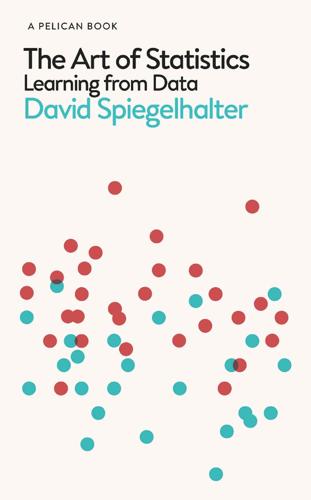
The Art of Statistics: Learning From Data
by
David Spiegelhalter
Published 14 Oct 2019
The appropriate handling of causation still remains contested within the field of statistics, whether it concerns pharmaceuticals or big ears, and without randomization it is rare to be able to draw confident conclusions. One imaginative approach takes advantage of the fact that many genes are spread essentially at random through the population, so it is as if we have been randomized to our specific version at conception. This is known as Mendelian randomization, after Gregor Mendel, who developed the modern idea of genetics.13 Other advanced statistical methods have been developed to try to adjust for potential confounders and so to get closer to an estimate of the actual effect of the exposure, and these are largely based on the important idea of regression analysis. And for this we must acknowledge, yet again, the fertile imagination of Francis Galton.
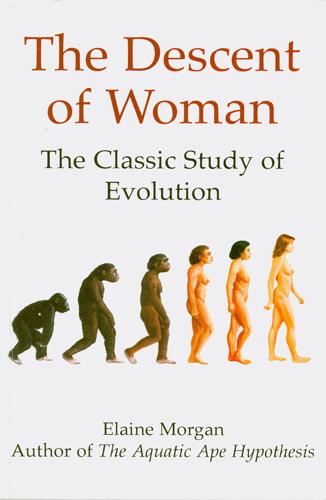
The Descent of Woman
by
Elaine Morgan
Published 1 Feb 2001
They had a long wait The greatest geological society in the world at that time, the Geological Society of London, ignored the idea—voiced no opinion, printed no comment, organized no debate. It was a gut reaction: they didn’t want to know. Who was this Wegener, anyway? He wasn’t even a geologist! He was a meteorologist, and they felt that the cobbler should stick to his last. (By the same token, the monk Gregor Mendel should have stuck to his prayers instead of laying the foundation of modern genetics, and A. R. Wallace should have carried on mounting his specimens instead of dead-heating with Darwin in his theory of Natural Selection, and zoologist Alister Hardy should not have encroached on the exclusive preserves of anthropologists.)
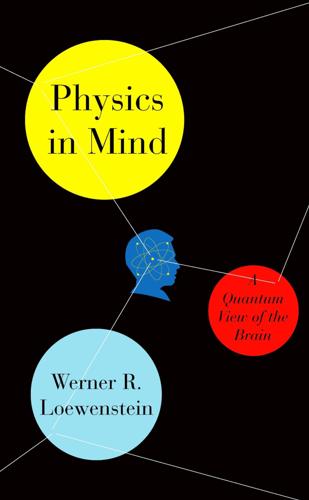
Physics in Mind: A Quantum View of the Brain
by
Werner Loewenstein
Published 29 Jan 2013
Nevertheless, where those preliminaries are over and done with, the crucial leaps are made the same way, with the mind’s eye: by establishing the reciprocal relationships between the pieces. Take our knowledge of the genes. This involved three leaps. The first happened in a little monastery in Brno, in 1865, where Gregor Mendel discovered the laws of heredity. He wrested them out of nothing more than the shapes of peas growing in the garden, that is, from the relationships between the shapes of successive pea generations. The second leap is less known. It happened 18 years later at Halle University, where the embryologist Wilhelm Roux, pondering the peculiar alignment of chromatin pieces during cell division, concluded that they were the carriers of the units of heredity.
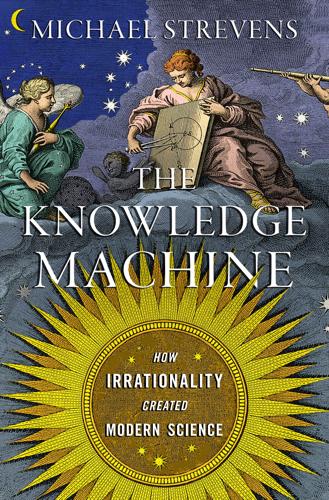
The Knowledge Machine: How Irrationality Created Modern Science
by
Michael Strevens
Published 12 Oct 2020
The 1919 eclipse is only a single example of the selective use of evidence. But the centuries since the Scientific Revolution are strewn with cases in which science’s biggest names can be seen discarding or distorting difficult data so as to create the impression that experiment was in perfect harmony with their theoretical or other aims. Gregor Mendel, the founder of genetics, almost certainly massaged the statistics he presented in the 1860s in support of his thesis that genes lie at the root of biological inheritance. Ernst Haeckel embellished his careful drawings of animal embryos around the same time to support his thesis that “ontogeny recapitulates phylogeny”—that a human embryo, for example, passes through stages in which it takes on forms more or less identical to those of fish embryos, then amphibian embryos, then bird embryos.
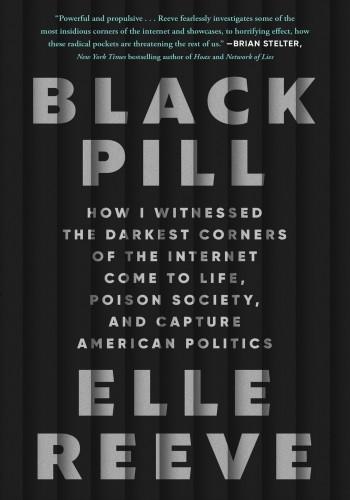
Black Pill: How I Witnessed the Darkest Corners of the Internet Come to Life, Poison Society, and Capture American Politics
by
Elle Reeve
Published 9 Jul 2024
In a presentation of his research on what he called “citizen race scientists,” UCLA professor Aaron Panofsky asked fellow academics a provocative question: “Are we teaching our students to directly engage and falsify these kinds of ideas, or do we teach them race is socially constructed because of history and politics?” I was not prepared. I didn’t remember much beyond Gregor Mendel, the nineteenth-century monk who explained how traits are inherited in pea plants. I’d been talking to trolls I’d found through Twitter, Reddit, and Tumblr since early 2016, and when I look back at those first messages, I cringe. I did not yet know that it was a waste of time to tell them race is a social construct.

Growth: From Microorganisms to Megacities
by
Vaclav Smil
Published 23 Sep 2019
Although the second half of the 19th century saw an explosion of demographic and economic studies, Verhulst’s work was ignored and it was rediscovered only during the 1920s and became influential only during the 1960s (Cramer 2003; Kint et al. 2006; Bacaër 2011). This was not the only instance of such forgetting: Gregor Mendel’s fundamental experiments in plant genetics done during the 1860s were also ignored for nearly half a century (Henig 2001). Could the neglect of Verhulst’s work be ascribed to Quetelet’s reservations about his pupil’s contributions published in the older man’s eulogy after the younger man’s premature death in 1849?
…
Henderson, J., et al. 2012. Measuring economic growth from outer space. American Economic Review 102:994–1028. Hendricks, B. 2008. WP1B4 Up-scaling. Paper presented at EWEC2008. www.upwind.eu/…/EWEC2008%20Presentations/Ben%20Hendriks.pdf. Henig, R. M. 2001. The Monk in the Garden: The Lost and Found Genius of Gregor Mendel, the Father of Genetics. Boston: Houghton Mifflin Harcourt. Herbert R. A., and R. J. Sharp, eds. 1992. Molecular Biology and Biotechnology of Extremophiles. Glasgow: Blackie. Hermansen, G. 1978. The populations of Rome: The regionaries. Historia 27:129–168. Hermanussen, M. 2003. Stature of early Europeans.
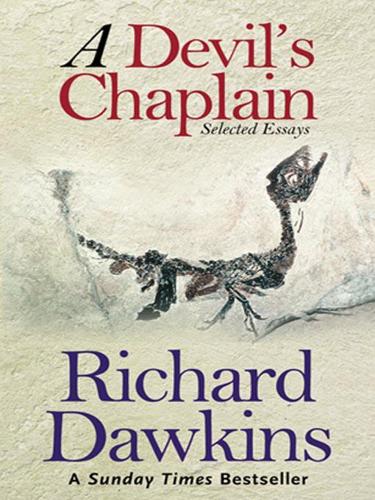
A Devil's Chaplain: Selected Writings
by
Richard Dawkins
Published 1 Jan 2004
Darwin needed only to retort to Jenkin: Whatever the reason, it is obviously the case that there is plenty of inherited variation and that’s good enough for my purposes. It is often claimed that the answer to the riddle lay on Darwin’s shelves, in the uncut pages of the proceedings of the Brunn Natural History Society, where nestled Gregor Mendel’s paper on Versuche über Pflanzen-Hybriden. Unfortunately this poignant story seems to be an urban myth. The two scholars best placed (at Cambridge and at Down House) to know what was in Darwin’s personal library can find no evidence that he ever subscribed to the proceedings, nor does it seem likely that he would have done so.39 They have no idea where the legend of the ‘uncut pages’ originated.

Living in a Material World: The Commodity Connection
by
Kevin Morrison
Published 15 Jul 2008
British Sugar website – http://www.britishsugar.co.uk/RVEe24abbb33b 93496a9b07a5dee9c82270,,.aspx Wisconsin Historical Society website – http://www.wisconsinhistory. org/. Lincoln was an officer in the Black Hawk wars. John Deere website – http://www.deere.com/en US/compinfo/history/ johndeerestory.html. The institutions were funded by the funds raised from the sale of public lands. Gregor Mendel did pioneering work on the theories of heredity, he also became a priest. In his research he used simple pea pod plants. Mendel studied seven basic characteristics of the pea pod plants and discovered three basic laws which governed the passage of a trait from one member of a species to another member of the same species.
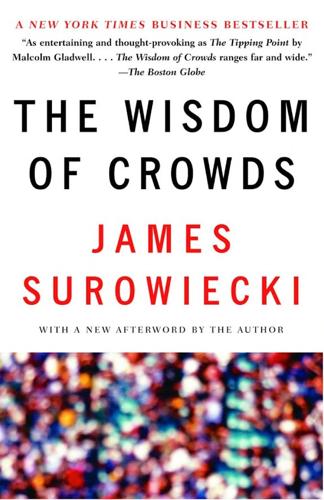
The Wisdom of Crowds
by
James Surowiecki
Published 1 Jan 2004
While this approach makes sense in terms of economizing on your attention—you can’t listen to or read everyone, so you only listen to the best—it has a number of dubious assumptions built into it, including the idea that we automatically know who the second-rate are, even before hearing them, as well as the idea that everything Fermi had to say was inherently valuable. The obvious peril is that important work will be ignored because the person who produced it does not have the right brand name. Perhaps the classic example of this is Gregor Mendel, who found his work on heredity ignored, at least in part, because he was an unknown monk and who, as a result, simply stopped publishing his results. The point is not that reputation should be irrelevant. A proven record of achievement does—and should—confer credibility on a person’s ideas. The point instead is that reputation should not become the basis of a scientific hierarchy.
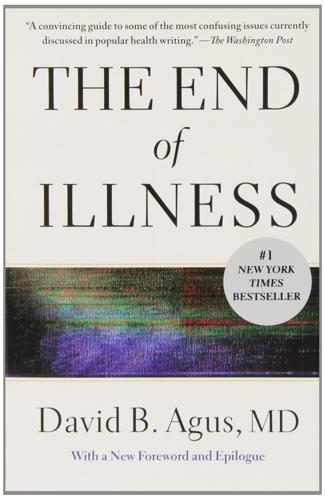
The End of Illness
by
David B. Agus
Published 15 Oct 2012
We don’t know what all of these features that we’ve found in blood mean or how they relate to one another. It may be that, like a genetic test, some single feature will actually tell us something important. But probably much more of the information lies in the patterns and combinations that we find. It’s almost as if we’re in the Gregor Mendel and Charles Darwin phase, toiling with our experiments and taking as many notes as we can to solve the ultimate puzzle of understanding the human body and the innumerable ways in which it conducts business for health or sickness. One of the major differences between how we’re working today and how Darwin and Mendel operated from their respective corners of the world more than a hundred years ago, is that we’re not working in a vacuum.
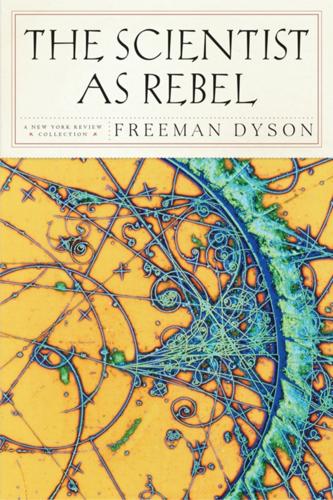
The Scientist as Rebel
by
Freeman Dyson
Published 1 Jan 2006
Amateurs had the freedom to jump from one area of science to another and start new enterprises without waiting for official approval. But in the nineteenth century, after two hundred years of amateur leadership, science became increasingly professional. Among the leading scientists of the nineteenth century, professionals such as Michael Faraday and James Clerk Maxwell were the rule and amateurs Charles Darwin and Gregor Mendel were the exceptions. In the twentieth century the ascendancy of the professionals became even more complete. No twentieth-century amateur could stand like Darwin in the front rank with Edwin Hubble and Albert Einstein. If Ferris is right, astronomy is now moving into a new era of youthful exuberance in which amateurs will again have an important share of the action.

The Industries of the Future
by
Alec Ross
Published 2 Feb 2016
In the years ahead, we will live in a world where we’ll be able to target cancer cells with true precision, breathe air out of lungs transplanted from farm animals, and deliver medical treatment from the best hospitals in the world to the poorest, most remote corners of the earth. Genomic research has been racing ahead ever since Gregor Mendel, a Czech monk, discovered the foundations of heredity in the mid-19th century. But the breakthrough that launched genomics on a collision course with medicine occurred in 1995, when the genome of a living organism—Haemophilus influenza, a bacterium that causes severe infections, typically in children—was sequenced for the first time.
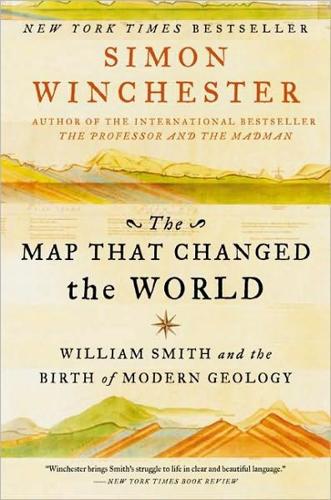
The Map That Changed the World
by
Simon Winchester
Published 1 Jan 2001
The mine was called the Mearns Pit, and though it was certainly one of the less familiar and less prosperous of the hundreds of mines and shafts that had been sunk over the centuries into the coal measures of North Somerset, its importance on the global stage is quite inestimable. Rugborne Farm, Smith’s first true home near High Littleton, which he called “the birthplace of geology.” For the Mearns Pit at High Littleton has a standing in the history of geology that is comparable to the one that Gregor Mendel’s Moravian pea garden has in the science of genetics, the Galápagos Islands in evolutionary theory, and the University of Chicago football stadium in the story of nuclear fission. Yet this Somerset coal mine also goes unremembered today, just like Rugborne Farm. There is no blue plaque, no brass plate, nothing.

An Optimist's Tour of the Future
by
Mark Stevenson
Published 4 Dec 2010
Judge Nathan Myhrvold wrote that ‘it is a hallmark of the scientific process that it is fair about considering new propositions; every now and then, radical ideas turn out to be true. Indeed, these exceptions are often the most momentous discoveries in science.’ History is, of course, littered with mavericks initially ridiculed or dismissed and later (sometimes much later) accepted as geniuses: including Charles Darwin (evolution), Gregor Mendel (genetic inheritance), Robert Goddard (liquid-fuelled rockets), Louis Pasteur (germ theory) and the Wright brothers (powered flight). Then again, the past is also full of challenges to accepted wisdom which crashed and burned. I give you James McConnell and Georges Ungar, who believed that memories were encoded in molecules and could therefore be transferred from one animal to another – giving rise to the possibility that you could take a pill and go on to recall the complete works of Shakespeare.

The Cancer Chronicles: Unlocking Medicine's Deepest Mystery
by
George Johnson
Published 26 Aug 2013
[http://www.bbbseed.com] CHAPTER 5 Information Sickness 1. experimenting with fruit flies: H. J. Muller, “Artificial Transmutation of the Gene,” Science 66, no. 1699 (July 22, 1927): 84–87. [http://www.sciencemag.org/content/66/1699/84.short] 2. discovered in his monastery garden: An English translation of Gregor Mendel’s landmark paper, “Experiments in Plant Hybridization” (1865), can be found online at MendelWeb. [http://www.mendelweb.org/Mendel.html] 3. That kind of clarity: The experiments by Avery, Hershey, and Chase, and the discovery of DNA’s double-helical structure, are described in Horace Freeland Judson’s The Eighth Day of Creation: Makers of the Revolution in Biology, expanded ed.
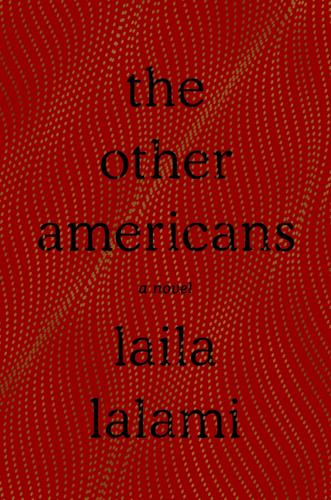
The Other Americans
by
Laila Lalami
Published 26 Mar 2019
From the moment I had seen her standing on her parents’ deck, lost like ten mislaid years, I had been willing to take the risk. And the pain that might still come my way was easy to push out of my mind when I took her in my arms. Often, I reminded her about things she seemed to have forgotten: that she’d given a class presentation on heredity in Gregor Mendel’s pea plants, which was interrupted by an earthquake drill; that she’d built the campfire on the overnight field trip to Whitewater Preserve; that she’d lied about sleeping at a friend’s house the night a group of us had gone to Anaheim for a concert. But now I was also discovering new things about her: what she looked like at dawn, just before the light filtered through the window above us; how her voice softened when she talked to her mother on the phone, and hardened when she talked to her sister.

The Weather Makers: How Man Is Changing the Climate and What It Means for Life on Earth
by
Tim Flannery
Published 10 Jan 2001
FOUR THE SAGES AND THE ONION SKIN A simple calculation shows that the temperature in the Arctic regions would rise about 8 to 9°C if the carbonic acid [CO2] increased 2.5 or three times its present value…The world’s present production of coal reaches in round numbers 500 millions of tonnes per annum, or 1 ton per square kilometre of the Earth’s surface. ARVID GUSTAV HÖGBOM, ‘Om Sannolikheton FöSekulära Forandringar I Atmosfärens Kolsyrehalt’, 1894 The twentieth century opened upon a greatly altered world. Charles Darwin was eighteen years in the grave, Gregor Mendel’s pioneering studies into genetic inheritance were about to be rediscovered, and the horse was nearing the end of its tenure as humanity’s principal source of transport. Yet one relic of a heroic, earlier age remained. In his eighth decade of life Alfred Russel Wallace was still writing with as much energy and vision as ever.

CRISPR People: The Science and Ethics of Editing Humans
by
Henry T. Greely
Published 22 Jan 2021
Editing Out Disease-Promoting Variations The most obvious potential benefit would be to edit embryos, or the eggs and sperm used to make embryos, to avoid the births of children whose genetic variations would give them a certainty or high risk of a specific genetic disease. And here it is time to explain the ways genetic diseases or other traits get inherited. If the disease or trait depends on just one gene, we call it a Mendelian condition or trait, named after Gregor Mendel, the Austrian monk who first discovered this kind of inheritance. If more than one gene is involved, we cleverly call them non-Mendelian conditions or traits. Most of the discussion below is about Mendelian conditions for the simple reason that there is more to say about them. Mendelian conditions can largely be put into five main categories, depending on where the relevant DNA is found and how many copies of the disease-causing variant are needed to lead to the disease: autosomal dominant, autosomal recessive, X-linked, Y-linked, or mitochondrial.1 Autosomal dominant diseases require only one copy of the disease-causing genetic variation; autosomal recessive diseases require two copies, one from each parent.

A Hunter-Gatherer's Guide to the 21st Century: Evolution and the Challenges of Modern Life
by
Heather Heying
and
Bret Weinstein
Published 14 Sep 2021
* * * — Following the discovery of the DNA double helix, there emerged a conflation of “evolutionary” traits with “genetic” traits. The terms evolutionary and genetic began to be used interchangeably, which made it more and more difficult, over time, to talk about evolutionary change that was not genetic. Darwin, had he been aware of Gregor Mendel’s work with peas, or had he been around to see the discovery of DNA, would have been pleased to know a mechanism of adaptation by natural selection, but he would not, we believe, have assumed that this was the only such mechanism. The conflation of evolutionary with genetic traits became entrenched in popular culture, as in the specious dichotomy of “nature versus nurture.”

Black Box Thinking: Why Most People Never Learn From Their Mistakes--But Some Do
by
Matthew Syed
Published 3 Nov 2015
He came from peasant stock in the west of what would become the Soviet Union and was spotted by the political leaders of the Communist revolution in the 1920s, when he claimed to have found a way to enhance crop yields.1 The technique was not as successful as Lysenko claimed, but the young scientist was ambitious and politically savvy. Over a period of ten years he gradually moved up the academic ranks. In 1934, he was appointed to the Lenin All-Union Academy of Agricultural Sciences. It was then that he took a major gamble. In the early twentieth century, the science of genetics, based on the work of Gregor Mendel, a German friar and scientist, was just beginning to take off. It proposed that heredity was encoded in small units called genes and could be described using statistical rules. Lysenko became an outspoken critic of this new theory, positioning himself against a rising tide of scientific opinion.

The Selfish Gene
by
Richard Dawkins
Published 1 Jan 1976
Each entity must exist in the form of lots of copies, and at least some of the entities must be potentially capable of surviving-in the form of copies-for a significant period of evolutionary time. Small genetic units have these properties: individuals, groups, and species do not. It was the great achievement of Gregor Mendel to show that hereditary units can be treated in practice as indivisible and independent particles. Nowadays we know that this is a little too simple. Even a cistron is occasionally divisible and any two genes on the same chromosome are not wholly independent. What I have done is to define a gene as a unit which, to a high degree, approaches the ideal of indivisible particulateness.

The Code of Capital: How the Law Creates Wealth and Inequality
by
Katharina Pistor
Published 27 May 2019
Still, there are ways to prolong their life span by altering some features of the original invention, or by recoding them with legal modules that do not have an expiration date, such as trade secrecy law. The genetic foundation of life was discovered only in the nineteenth century by the friar and botanist Gregor Mendel. By 1944, scientists had discovered that DNA (deoxyribonucleic acid) was the carrier for genetic information, and in 1953, James Watson and Francis Crick published a paper in which they depicted the double helix structure of the DNA.1 Their work marked a major breakthrough that revolutionized our understanding of biology, inheritance, and evolution and earned the two scientists, together with Maurice Wilkins, the Nobel Prize in Medicine in 1962.
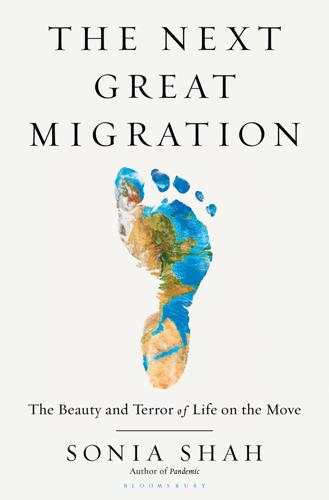
The Next Great Migration: The Beauty and Terror of Life on the Move
by
Sonia Shah
Over the course of several generations, the tailless mice’s offspring would be born with no tails, say, or at least with shortened ones. But they hadn’t been. Each subsequent generation developed normal tails, with no blending or environmental effect at all. Not long afterward a few botanists in Europe published papers resurrecting some obscure experiments conducted decades earlier by an Augustinian monk named Gregor Mendel. Mendel had conducted tens of thousands of experiments in pea plants, carefully recording how traits such as whether peas were wrinkled or smooth traveled through the generations. He, too, had found that rather than blending with other traits or varying according to environmental conditions, traits marched unchanged from generation to generation, expressing themselves based on a single, intrinsic, and immutable factor: whether the trait was “dominant” or “recessive.”
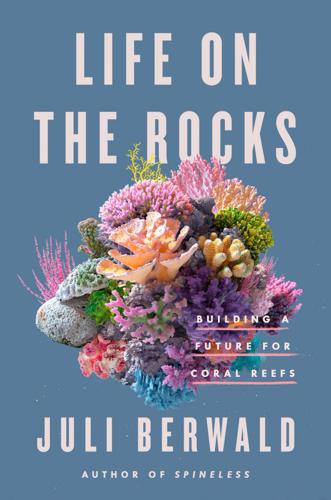
Life on the Rocks: Building a Future for Coral Reefs
by
Juli Berwald
Published 4 Apr 2022
More than a decade ago, Line and Misha Matz teamed up to investigate some of the most basic, but critical, questions about coral genetics, beginning with: Can corals pass heat tolerance on to their offspring? At the time, there was no SeaSim facility full of replicate tanks with precise controls. Instead, Line said with a smile, “The work Misha and I did were kind of in lunch boxes.” Using experiments like the ones Gregor Mendel performed with his tall and short pea plants back in the 1880s, they crossed corals from warmer regions with each other; corals from cooler regions with each other; and corals from warmer regions with those from cooler regions. They exposed the resulting larvae to increasingly warmer water and monitored which ones survived best.

Spineless: The Science of Jellyfish and the Art of Growing a Backbone
by
Juli Berwald
Published 14 May 2017
He also knew that variability among individuals was the raw material of natural selection. But he couldn’t say how any of that happened. The mechanism of inheritance was a gaping hole in his theory, one that dogged him to the day he died. The solution, the gene, was in fact known during Darwin’s life. It was discovered by a Dutch monk, Gregor Mendel, and published in 1866, a full sixteen years before Darwin died. We know that Mendel even made forty copies of his meticulous work on pea plants, which proved the existence of the gene, and sent them to the most illustrious scientists in Europe. Darwin was probably one of those forty, although the manuscript was not found in Darwin’s study after he died.

Visual Thinking: The Hidden Gifts of People Who Think in Pictures, Patterns, and Abstractions
by
Temple Grandin, Ph.d.
Published 11 Oct 2022
Or how does one family wind up with all accountants and another all lawyers? It is an old debate, and at the center of it is how much of a person’s abilities are genetically determined and how much are learned. When I was in college, it was believed that all inherited qualities followed a simple pattern based on Gregor Mendel’s theory of genetic principles. Mendel famously bred different varieties of garden peas, and the results showed that various traits were heritable, or what we now call genetic. Autism was not considered to be such a trait. Instead, it was long thought to arise from nurture, or rather from the lack of it, following Bruno Bettelheim’s widely accepted theory that it was attributable to “refrigerator mothers” who could not bond with their children.

The Long Boom: A Vision for the Coming Age of Prosperity
by
Peter Schwartz
,
Peter Leyden
and
Joel Hyatt
Published 18 Oct 2000
People have been plugging away in this area almost from the dawn of agriculture itself. Breeding new kinds of plants, however, has been sort of hit or miss and has taken inordinate amounts of time. You took one kind of plant that, say, grows well in dry climates and tried to cross it with one that tastes sweeter. This method conjures up images of Gregor Mendel, the nineteenth-century Austrian monk who first figured out how male and female plants pass on their distinctive genetic material—but who spent his entire life trying to get different kinds of pea plants to cross-pollinate. It's a 194 The LONCJ BOOM laborious process isolating plants with certain traits and then waiting through successive growing seasons to see results in future generations.

Machine, Platform, Crowd: Harnessing Our Digital Future
by
Andrew McAfee
and
Erik Brynjolfsson
Published 26 Jun 2017
It’s also clear, however, that firms are still going strong, and that in many ways their economic influence is growing, not shrinking. So, is TCE’s basic rule of thumb wrong? No, it’s not, but it needs to be modernized. Eighty years of research has built on and enhanced Coase’s findings since “The Nature of the Firm” appeared. Continuing to rely on it alone is a bit like treating Gregor Mendel’s mid-nineteenth-century work as the last word on genetics and ignoring Watson and Crick, the discovery of DNA, and everything that came after. No Matter How Smart They Get, Contracts Will Still Be Incomplete Of the many elaborations of TCE, those that are most relevant here are the concepts of incomplete contracts and residual rights of control.

When Einstein Walked With Gödel: Excursions to the Edge of Thought
by
Jim Holt
Published 14 May 2018
He created the first psychological questionnaire, which he distributed to scientists to learn about their powers of mental imagery. He also invented the technique of word association, which he used to plumb his own unconscious, decades before Freud. Galton remained restlessly active through the turn of the century. In 1900, eugenics received a big boost in its prestige when Gregor Mendel’s work on the heredity of peas came to light. Suddenly hereditary determinism was the scientific fashion. Although Galton was plagued by deafness and asthma (which he tempered by smoking hashish), he gave a major address on eugenics before the Sociological Society in 1904. “What nature does blindly, slowly, and ruthlessly, man may do providently, quickly, and kindly,” he declared.
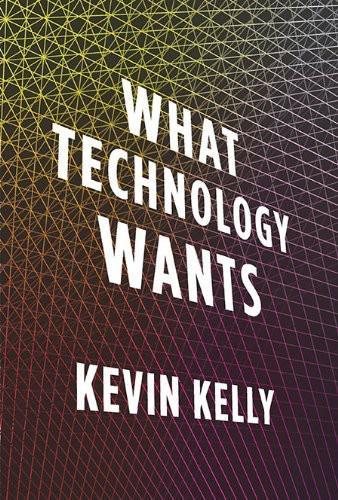
What Technology Wants
by
Kevin Kelly
Published 14 Jul 2010
Ideally, an innovation opens up only the next adjacent step from what is known and invites the culture to move forward one hop. An overly futuristic, unconventional, or visionary invention can fail initially (it may lack essential not-yet-invented materials or a critical market or proper understanding) yet succeed later, when the ecology of supporting ideas catches up. Gregor Mendel’s 1865 theories of genetic heredity were correct but ignored for 35 years. His keen insights were not embraced because they did not explain the problems biologists had at the time, nor did his explanation operate by known mechanisms, so his discoveries were out of reach even for the early adopters.

The Red Queen: Sex and the Evolution of Human Nature
by
Matt Ridley
Published 14 Aug 1993
The very subtitle of The Origin of Species refers to the ‘preservation of favoured races’.12 But his main focus was on the individual, not the species. Every creature differs from every other; some survive or thrive more readily than others and leave more young behind; if those changes are heritable, gradual change is inevitable. Darwin’s ideas were later fused with the discoveries of Gregor Mendel, who had proved that heritable features came in discrete packages that became known as genes, to form a body of theory that was able to explain how new mutations in genes could spread through a whole species. But there lay buried beneath this theory an unexamined dichotomy. When the fittest are struggling to survive, with whom are they competing?

Flow: The Psychology of Optimal Experience
by
Mihaly Csikszentmihalyi
Published 1 Jul 2008
He was also involved in agricultural reform and social planning, but his elegant and classic experiments are what he enjoyed doing most. Luigi Galvani, who did the basic research on how muscles and nerves conduct electricity, which in turn led to the invention of the electric battery, was a practicing physician until the end of his life. Gregor Mendel was another clergyman, and his experiments that set the foundations of genetics were the results of a gardening hobby. When Albert A. Michelson, the first person in the United States to win a Nobel prize in science, was asked at the end of his life why he had devoted so much of his time to measuring the velocity of light, he is said to have replied, “It was so much fun.”
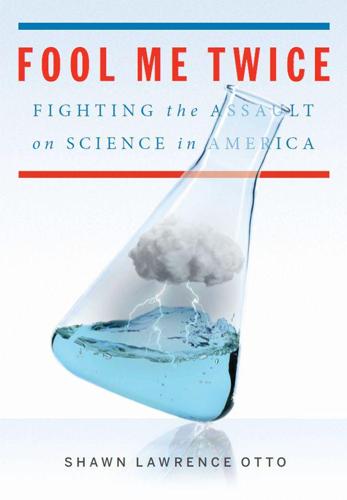
Fool Me Twice: Fighting the Assault on Science in America
by
Shawn Lawrence Otto
Published 10 Oct 2011
Befitting the great westward expansion, in the nineteenth century it was America’s pioneer spirit and can-do attitude that produced the world’s great inventors and implementers, including Eli Whitney, Samuel Morse, Alexander Graham Bell, Thomas Edison, and Nikola Tesla, but Europe was still the home of real science and the scientists who made the fundamental theoretical breakthroughs, including Charles Darwin, Marie Curie, Michael Faraday, James Maxwell, Gregor Mendel, Louis Pasteur, Max Planck, Alfred Nobel, and Lord Kelvin. This focus on tinkering and engineering versus science and discovery was partly because America lacked the well-established academies of Europe, but it also seemed to have something to do with the American character itself. French political scholar Alexis de Tocqueville noted this focus on pragmatism when he toured America in 1831 and 1832.
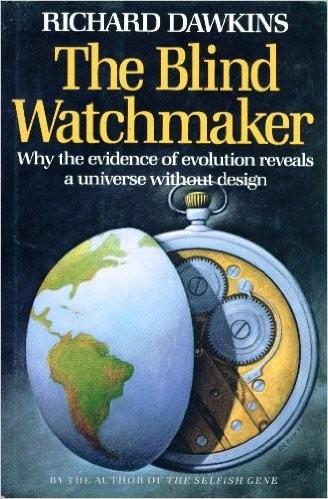
The Blind Watchmaker; Why the Evidence of Evolution Reveals a Universe Without Design
by
Richard Dawkins
Published 1 Jan 1986
The information on a modern laser disc (often called ‘compact disc’, which is a pity, because the name is uninformative and also usually mispronounced with the stress on the first syllable) is digital, stored in a series of tiny pits, each of which is either definitely there or definitely not there: there are no half measures. That is the diagnostic feature of a digital system: its fundamental elements are either definitely in one state or definitely in another state, with no half measures and no intermediates or compromises. The information technology of the genes is digital. This fact was discovered by Gregor Mendel in the last century, although he wouldn’t have put it like that. Mendel showed that we don’t blend our inheritance from our two parents. We receive our inheritance in discrete particles. As far as each particle is concerned, we either inherit it or we don’t. Actually, as R. A. Fisher, one of the founding fathers of what is now called neo-Darwinism, has pointed out, this fact of particulate inheritance has always been staring us in the face, every time we think about sex.
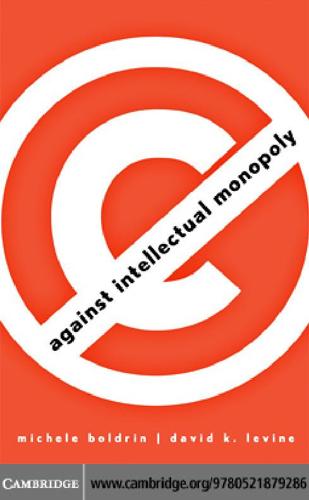
Against Intellectual Monopoly
by
Michele Boldrin
and
David K. Levine
Published 6 Jul 2008
The commissioner wisely pointed out that patenting some newly found form of life would be tantamount to attributing monopoly power (and de facto ownership) to all copies of that form of life to be subsequently found, which struck him, as it strikes us, as “unreasonable and impossible.” The story of agriculture, however, like that in other industries, is also the story of the intellectually bankrupt seeking protection for their old ideas. The discovery of the economic potential of Mendel’s law – imagine a world in which Gregor Mendel had managed to patent applications of his law, no longer an impossibility these days – started a long series of attempts to subvert the 1889 doctrine. The National Committee on Plant Patents, created and financed by U.S. breeders, was the leader of an intense lobbying campaign arguing that, now, contrary to before, a “new” plant or animal could, in principle, be exactly identified and that its “creation” was equivalent, therefore, to the invention of a new mechanical tool.
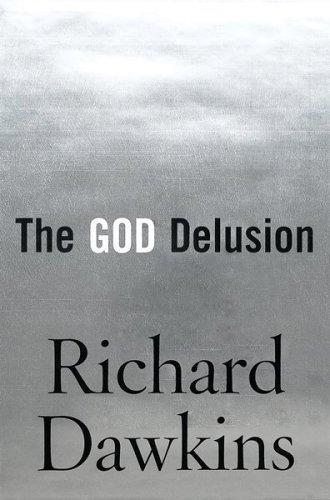
The God Delusion
by
Richard Dawkins
Published 12 Sep 2006
.* But, as in Britain, they stand out for their rarity and are a subject of amused bafflement to their peers in the academic community. In 1996, in the gardens of his old college at Cambridge, Clare, I interviewed my friend Jim Watson, founding genius of the Human Genome Project, for a BBC television documentary that I was making on Gregor Mendel, founding genius of genetics itself. Mendel, of course, was a religious man, an Augustinian monk; but that was in the nineteenth century, when becoming a monk was the easiest way for the young Mendel to pursue his science. For him, it was the equivalent of a research grant. I asked Watson whether he knew many religious scientists today.
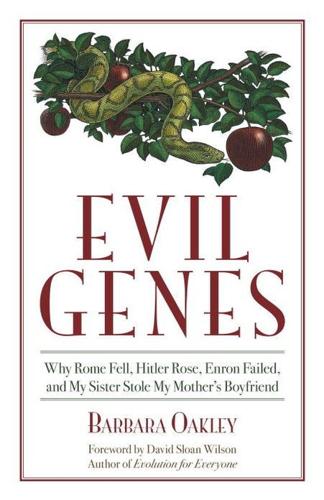
Evil Genes: Why Rome Fell, Hitler Rose, Enron Failed, and My Sister Stole My Mother's Boyfriend
by
Barbara Oakley Phd
Published 20 Oct 2008
Such individuals help form the backbone of society—the superb secretary whose adept business skills make her boss look good, or the guy who never even sees fit to mention to his family that he had won the Bronze Star for his cool heroism under fire. One such brilliantly talented, non-limelight-hogging person was Gregor Mendel, the man now known as the “Father of Genetics.” Mendel was an inordinately neurotic individual who spent his teenage years in bed with a mysterious illness that now appears to have been akin to acute anxiety.8 In keeping with his neuroticism, Mendel suffered so badly from test anxiety that he twice failed the examination to become a high school teacher.

Civilization: The West and the Rest
by
Niall Ferguson
Published 28 Feb 2011
Intrigued by what he heard about a mixed-race people in South-West Africa, the Rehoboth Basters, Fischer spent two months in the field measuring them from head to foot and scrutinizing their physiognomies. In 1913 he published his findings, trumpeting them as the first ever attempt to apply to humans the principles of genetic inheritance developed by the Russian Gregor Mendel. ‘The Bastards’, as he called them, were racially superior to pure negroes but inferior to pure whites. There might therefore be a useful role for people of mixed race as colonial policemen or lower officials. But any further racial mixing should be avoided: We know this absolutely for sure: without exception, any European people … that has absorbed the blood of less valuable races – and only a zealot can deny that blacks, Hottentots and many others are less valuable [than whites] – has paid for this absorption with its spiritual [and] cultural downfall.88 By this time there was already a complex of laws against miscegenation in German South-West Africa.

Beautiful Data: The Stories Behind Elegant Data Solutions
by
Toby Segaran
and
Jeff Hammerbacher
Published 1 Jul 2009
Common sense would tell you that should a taller and a shorter person breed, and their child happens to be of intermediate height, then the hereditary information for “tallness” and “shortness” have been blended together irreversibly. Sexual reproduction should be driving species to a state of averageness. In fact, genes do not mix together irreversibly, as was first discovered by Darwin’s contemporary, Gregor Mendel. The reason is the digital nature of DNA. The medium-size child will have exact copies of one set of genes from the father, and another from the mother. There is no mixing together of the genes: for instance, at no point does a sequence have a half-A-half-T state in it. So the information there is not lost, and can be passed on unmodified to the grandchildren.
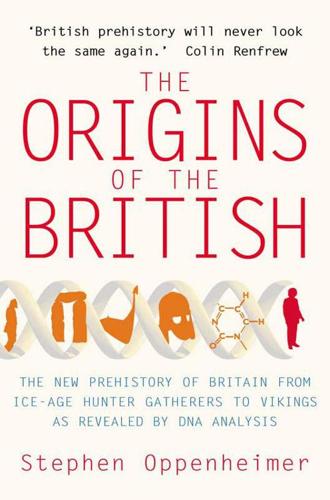
The Origins of the British
by
Stephen Oppenheimer
Published 1 Jul 2007
During human reproduction, the parents’ DNA is copied and transmitted in equal proportions. It is important to know that although most of the DNA from each parent is segregated during reproduction, small bits of their respective contributions are shuffled and mixed at each generation. The mixing here is not that of mass random allocation of genes brilliantly inferred by Gregor Mendel, but tiny crossovers, duplications, deletions and swaps between maternal and paternal DNA contributions. This is known technically as recombination. Luckily for genetic researchers, there are two small portions of our DNA that do not recombine. Non-recombining DNA is easier to trace back through previous generations since the information is uncorrupted during transmission from one generation to the next.

The Greatest Show on Earth: The Evidence for Evolution
by
Richard Dawkins
Published 21 Sep 2009
He was aware, of course, that characteristics run in families; aware that offspring tend to resemble their parents and siblings; aware that particular characteristics of dogs and pigeons breed true. Heredity was a central plank of his theory of natural selection. But a gene pool is something else. The concept of a gene pool has meaning only in the light of Mendel’s law of the independent assortment of hereditary particles. Darwin never knew Mendel’s laws, for although Gregor Mendel, the Austrian monk who was the father of genetics, was Darwin’s contemporary, he published his findings in a German journal which Darwin never saw. A Mendelian gene is an all-or-nothing entity. When you were conceived, what you received from your father was not a substance, to be mixed with what you received from your mother as if mixing blue paint and red paint to make purple.
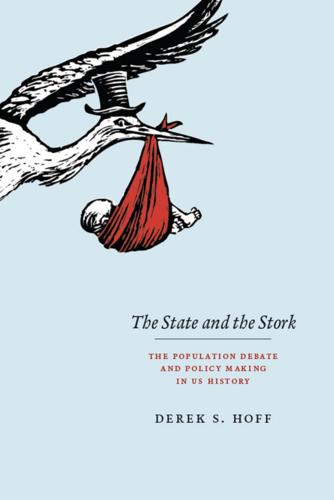
The State and the Stork: The Population Debate and Policy Making in US History
by
Derek S. Hoff
Published 30 May 2012
Kevles, In the Name of Eugenics: Genetics and the Uses of Human Heredity (Cambridge, Mass: Harvard University Press, 1985), 21. 92. Here I refer to August Weismann’s 1890s research on germ plasm (genes), which overturned Jean-Baptiste Lamark’s theory that acquired traits could be passed on, and also to the rediscovery of Gregor Mendel’s 1860s research into the inheritance of traits among peas. For the switch from Lamarkian to Mendelian genetics, see Victoria Hattam, In the Shadow of Race: Jews, Latinos, and Immigrant Politics in the United States (Chicago: University of Chicago Press, 2007), chap. 2. 93. Kevles, In the Name of Eugenics, 74–76 and 98.

The Mission: A True Story
by
David W. Brown
Published 26 Jan 2021
You grade two hundred twenty papers, and they are brimming with pages of pilfered prose, and there are only so many times you can debate with undergrads the answer to a multiple-choice question before you start fantasizing about gasoline, matches, and applying both to oneself. His graduate students were great, though—curious, creative, conscientious—and he took care to advise and mentor them as Ron Greeley had advised and mentored him, to sustain that unbroken chain reaching back to Plato’s Academy. Bob relished pairing, like Gregor Mendel in his garden of pea plants, the expertise of different grad students—his potential planetary scientists—to see what might grow from the couplings.12 Bob came to Colorado by way of Brown University in Providence, Rhode Island, where he’d put in six years as a postdoctoral researcher—years longer than most for that kind of position, but he was at the time analyzing data returned from the flagship Galileo, NASA’s spacecraft at Jupiter.
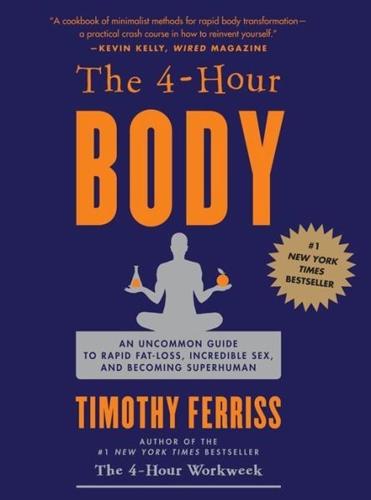
The 4-Hour Body: An Uncommon Guide to Rapid Fat-Loss, Incredible Sex, and Becoming Superhuman
by
Timothy Ferriss
Published 1 Dec 2010
To justify their avoidance of embarrassment, the whole profession tells the rest of us, based on “extensive scientific studies,” that black is white. Self-experimentation allows acne sufferers to ignore the strange claims of dermatologists, not to mention their dangerous drugs (such as Accutane). Persons with acne can simply change their diets until they figure out what foods cause the problem. Gregor Mendel was a monk. He was under no pressure to publish; he could say whatever he wanted about horticulture without fear for his job. Charles Darwin was wealthy. He had no job to lose. He could write On the Origin of Species very slowly. Alfred Wegener, who proposed continental drift, was a meteorologist.

The Information: A History, a Theory, a Flood
by
James Gleick
Published 1 Mar 2011
To banish the fallacious thinking, he proposed a new terminology, beginning with gene: “nothing but a very applicable little word, easily combined with others.”♦ It hardly mattered that neither he nor anyone else knew what a gene actually was; “it may be useful as an expression for the ‘unit-factors,’ ‘elements,’ or ‘allelomorphs.’… As to the nature of the ‘genes’ it is as yet of no value to propose a hypothesis.” Gregor Mendel’s years of research with green and yellow peas showed that such a thing must exist. Colors and other traits vary depending on many factors, such as temperature and soil content, but something is preserved whole; it does not blend or diffuse; it must be quantized.♦ Mendel had discovered the gene, though he did not name it.
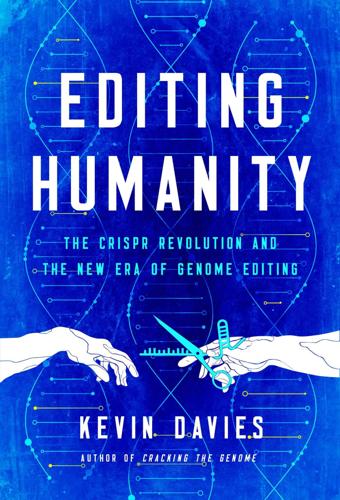
Editing Humanity: The CRISPR Revolution and the New Era of Genome Editing
by
Kevin Davies
Published 5 Oct 2020
9 * * * In the first few months of 2007, two new postdocs joined the Doudna lab. Blake Wiedenheft introduced CRISPR to the laboratory; Martin Jínek ensured the lab’s legacy. Jínek hails from Třinec, a city on the border between the Czech Republic and Poland. One hundred miles to the west is Brno, the birthplace of genetics. Surprisingly, Jínek didn’t pay a visit to Gregor Mendel’s monastery until a few years ago, when he was invited to give a lecture. At sixteen, Jínek won a scholarship to a private boarding school in England. He then spent four years at Cambridge University studying chemistry, but always had an inclination towards biology, especially RNA, thanks in no small part of Doudna’s string of successes with Szostak and Cech.
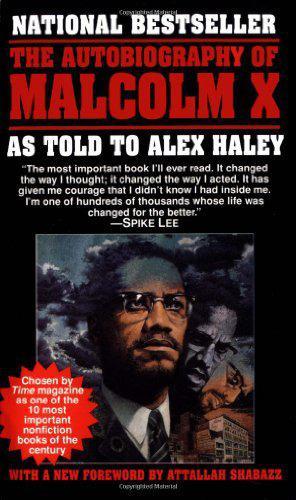
The autobiography of Malcolm X
by
Malcolm X; Alex Haley
Published 15 Aug 1999
Rogers' three volumes of _Sex and Race_ told about race-mixing before Christ's time; about Aesop being a black man who told fables; about Egypt's Pharaohs; about the great Coptic Christian Empires; about Ethiopia, the earth's oldest continuous black civilization, as China is the oldest continuous civilization. Mr. Muhammad's teaching about how the white man had been created led me to _Findings In Genetics_ by Gregor Mendel. (The dictionary's G section was where I had learned what “genetics” meant. ) I really studied this book by the Austrian monk. Reading it over and over, especially certain sections, helped me to understand that if you started with a black man, a white man could be produced; but starting with a white man, you never could produce a black man- because the white gene is recessive.
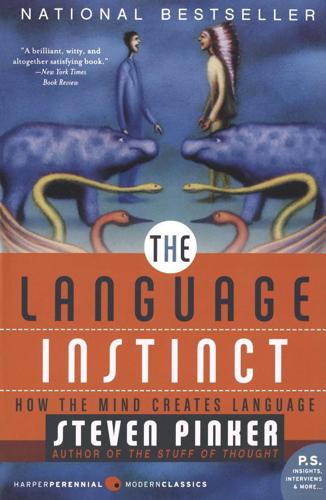
The Language Instinct: How the Mind Creates Language
by
Steven Pinker
Published 1 Jan 1994
If the cause were in the environment—poor nutrition, hearing the defective speech of an impaired parent or sibling, watching too much TV, lead contamination from old pipes, whatever—then why would the syndrome capriciously strike some family members while leaving their near age-mates (in one case, a fraternal twin) alone? In fact, the geneticists working with Gopnik noted that the pedigree suggests a trait controlled by a single dominant gene, just like pink flowers on Gregor Mendel’s pea plants. What does this hypothetical gene do? It does not seem to impair overall intelligence; most of the afflicted family members score in the normal range in the nonverbal parts of IQ tests. (Indeed, Gopnik studied one unrelated child with the syndrome who routinely received the best grade in his mainstream math class.)

The Man Who Knew Infinity: A Life of the Genius Ramanujan
by
Robert Kanigel
Published 25 Apr 2016
A London photographer took his picture for the occasion and did a little retouching around the eyes and mouth. But it was probably a reflex action; Hardy still looked boyish. Many years later, Hardy would insist that none of the mathematics he had done during his career was ever in the least “useful.” But around now came one exception. During the previous century an Austrian monk named Gregor Mendel had done experiments in crossing tall pea plants with dwarfs, found that each generation of the progeny bore fixed, predictable proportions of dwarf and tall, and so laid the basis for the science of genetics. At the time, of course, nobody cared, and Mendel’s experiments lay forgotten. But the publication of his work in 1900, sixteen years after his death, sparked a flurry of interest in his insights, and the next few years saw them the subject of much active debate.

The Idea of Decline in Western History
by
Arthur Herman
Published 8 Jan 1997
This was particularly true of society’s man-made environment, which brought new artificial elements to the evolutionary equation. In his later Descent of Man (1871), Darwin himself voiced doubts about whether the growth of civilization might actually serve to undermine natural selection.9 At the same time, heredity was not fixed. It, too, was constantly evolving. Even before Gregor Mendel, every student of genetics knew that reproduction was a complex process of similarity, by which white swans produce white swans, but also of diversity, by which white swans from time to time produce black swans. For the Darwinian, the interplay of diversity and similarity was overshadowed by one undoubted fact: all human beings, regardless of their race or cultural status, were descended from apes.
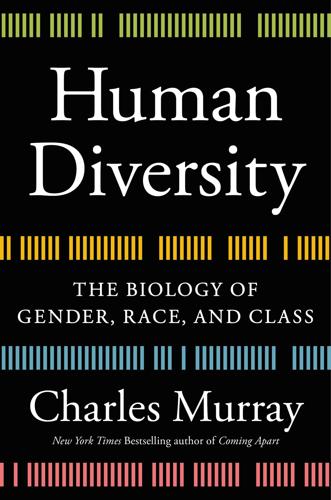
Human Diversity: The Biology of Gender, Race, and Class
by
Charles Murray
Published 28 Jan 2020
The Hawks study concluded that “the rapid cultural evolution during the Late Pleistocene created vastly more opportunities for further genetic change, not fewer, as new avenues emerged for communication, social interactions, and creativity.”16 It was a radical departure from the conventional wisdom, but just the beginning of a wholesale rethinking of recent evolution. From Darwin’s Insights to the Modern Synthesis The word genetics wasn’t even coined until 1905, soon after Gregor Mendel’s pioneering work was rediscovered after having been ignored for almost half a century. The first half of the twentieth century saw a series of landmark discoveries about the biology of genetic transmission, led by Thomas Hunt Morgan in the early decades and culminating in the discovery of the double-helix structure of DNA by James Watson and Francis Crick in 1953.17 From the beginning, scientists were aware of the potential importance of genetics for explaining how evolution worked at the molecular level.

The Story of Philosophy
by
Will Durant
Published 23 Jul 2012
Aristotle followed this lead and performed experiments that enabled him to give a description of the development of the chick which even today arouses the admiration of embryologists.31 He must have performed some novel experiments in genetics, for he disapproves the theory that the sex of the child depends on what testis supplies the reproductive fluid, by quoting a case where the right testis of the father had been tied and yet the children had been of different sexes.32 He raises some very modern problems of heredity. A woman of Elis had married a Negro; her children were all whites, but in the next generation Negroes reappeared; where, asks Aristotle, was the blackness hidden in the middle generation?33 There was but a step from such a vital and intelligent query to the epochal experiments of Gregor Mendel (1822–1882). Prudens quæstio dimidium scientiæ—to know what to ask is already to know half. Surely, despite the errors that mar these biological works, they form the greatest monument ever raised to the science by any one man. When we consider that before Aristotle there had been, so far as we know, no biology beyond scattered observations, we perceive that this achievement alone might have sufficed for one lifetime, and would have given immortality.
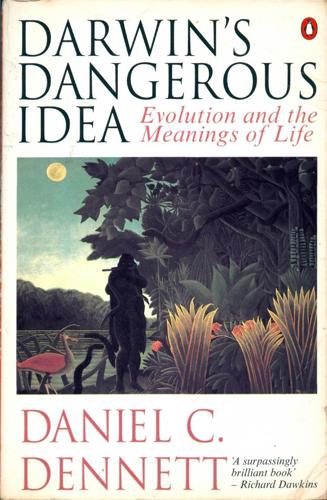
Darwin's Dangerous Idea: Evolution and the Meanings of Life
by
Daniel C. Dennett
Published 15 Jan 1995
Darwin recognized the seriousness of this challenge, and neither he nor his many ardent supporters succeeded in responding with a description of a convincing and well-documented mechanism of heredity that could combine traits of parents while maintaining an underlying and unchanged identity. The idea they needed was right at hand, uncovered ("formulated" would be too strong) by the monk Gregor Mendel and published in a relatively obscure Austrian journal in 1865, but, in the best-savored irony in the history of science, it lay there unnoticed until its importance was appreciated (at first dimly) around 1900. Its triumphant establishment at the heart of the "Modern Synthesis" (in effect, the synthesis of Mendel and Darwin) was eventually made secure in the 1940s, thanks to the work of Theodosius Dobzhansky, Julian Huxley, Ernst Mayr, and others.
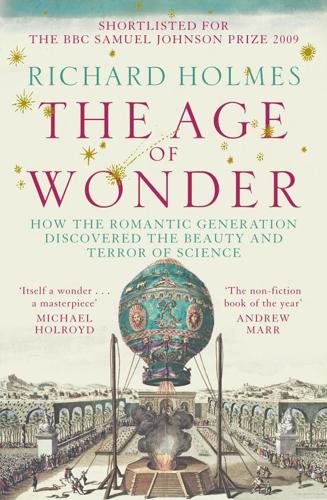
The Age of Wonder
by
Richard Holmes
Published 15 Jan 2008
Diderot’s Supplement to the Voyage of Bougainville (written in 1772 but not published until 1777) proclaimed Tahiti as a model for the reform of sexual relations in Europe: relaxing the conventions of marriage, promulgating free love between the young, and emphasising the importance of mutual physical pleasure between partners. ♣ Carl Linnaeus (1707-78) emphatically rejected evolution. His ‘systematics’ revealed no connecting law of growth or change, as would the transformational notion explored by several later botanists until Gregor Mendel (1822-84), patiently studying generation after generation of garden peas, gave rigour to the science of genetics. Coleridge pointed to this difference between an organising taxonomy and a dynamic scientific principle or law in essays in The Friend (1819). The psychology of collecting, ordering and naming specimens could also be seen as a form of mental colonising and empire-building.
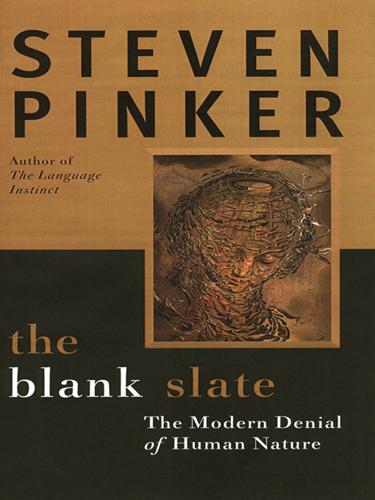
The Blank Slate: The Modern Denial of Human Nature
by
Steven Pinker
Published 1 Jan 2002
In 1828 Friedrich Wöhler showed that the stuff of life is not a magical, pulsating gel but ordinary compounds following the laws of chemistry. Charles Darwin showed how the astonishing diversity of life and its ubiquitous signs of design could arise from the physical process of natural selection among replicators. Gregor Mendel, and then James Watson and Francis Crick, showed how replication itself could be understood in physical terms. The unification of our understanding of life with our understanding of matter and energy was the greatest scientific achievement of the second half of the twentieth century. One of its many consequences was to pull the rug out from under social scientists like Kroeber and Lowie who had invoked the “sound scientific method” of placing the living and nonliving in parallel universes.
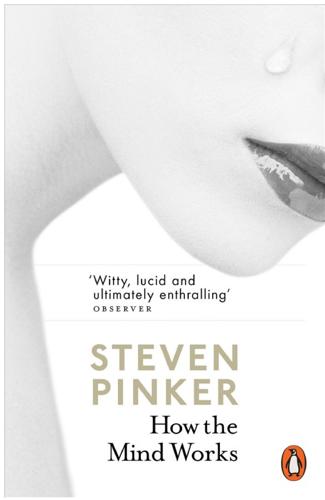
How the Mind Works
by
Steven Pinker
Published 1 Jan 1997
But of course it is exactly a million years that it took me, a million years that it took mankind … to reach its present stage of evolution. Finally, two kinds of formal modeling have shown that natural selection can work. Mathematical proofs from population genetics show how genes combining according to Gregor Mendel’s laws can change in frequency under the pressure of selection. These changes can occur impressively fast. If a mutant produces just 1 percent more offspring than its rivals, it can increase its representation in a population from 0.1 percent to 99.9 percent in just over four thousand generations.
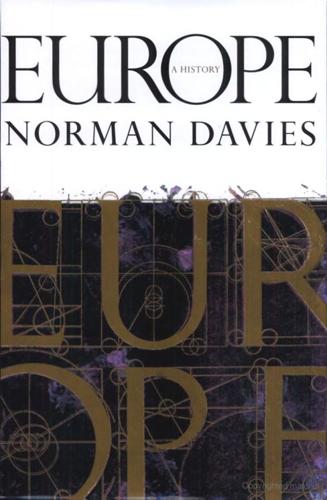
Europe: A History
by
Norman Davies
Published 1 Jan 1996
Ulster, defiant, had no sense of Irishness. ‘Ireland is not a nation,’ said a future British prime minister, ‘but two peoples separated by a deeper gulf than that dividing Ireland from Great Britain.’37 Sinn Fein, which had always looked to the USA for support, now sought aid from Germany. [FAMINE] [ORANGE] GENES IIN 1866 Father Gregor Mendel (1811–84), abbot of the Augustinian I monastery at Brno in Moravia, published the findings of his experiments into the propagation of the common green pea, Pisum sativum. For several years the abbot had been observing the peas in the monastery garden. By careful cross-pollination, and by concentrating on just a few specific characteristics such as height and colour, he was able to demonstrate definite patterns of inheritance in successive plant generations.
…
Lysenko received two Stalin Prizes, the Order of Lenin and the title Hero of the USSR.2 Western biologists treated Lysenko as ‘illiterate’. In return, Lysenko derided all orthodox geneticists as ‘reactionary decadents grovelling before Western capitalism’. Foremost among the targets of his scorn was Father Gregor Mendel.3 The Ukrainians lived under two ‘Eastern autocracies’. Once subjects of Poland, they were now subjects either of Russia or of Austria. An overwhelmingly peasant people, their level of national consciousness was necessarily low until the bonds of serfdom were severed in mid-century. Traditionally known as Rusini or ‘Ruthenians’, they now began to adopt the ‘Ukrainian’ label in reaction to the misleading and insulting designation of’Little Russians’, which tsarist officialdom had invented for them.

Central Europe Travel Guide
by
Lonely Planet
On the square’s eastern side is the quirky House of the Four Mamlases , dating from 1928 and with four moronic ‘Atlas’ figures struggling to hold the building and their loincloths up at the same time. Mendel Museum MUSEUM (www.mendel-museum.com; Mendlovo nám 1; adult/child 60/30Kč; 10am-5pm Tue-Sun) Gregor Mendel (1822–84), the Augustinian monk whose studies of peas and bees at Brno’s Abbey of St Thomas established modern genetics, is commemorated in the Mendel Museum, housed in the abbey itself. Catch tram 1 from the train station to Mendlovo nám. Vila Tugendhat NOTABLE BUILDING ( 545 212 118; www.tugendhat.eu; Černopolni 45) Brno is dotted with cubist, functionalist and internationalist buildings, and one of the finest is the functionalist Vila Tugendhat designed by Mies van der Rohe in 1930.
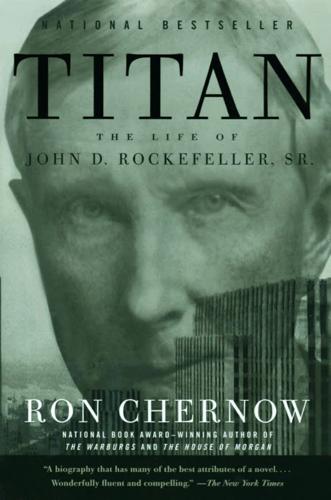
Titan: The Life of John D. Rockefeller, Sr.
by
Ron Chernow
Published 1 Jan 1997
While Parmalee had rather cool relations with his children, Alta insisted to her father that they “love him as dearly and respect him so much that they cannot bear to see even the slightest shadow cross his face.”93 The compliment can also be read to connote a certain fear that the children had of him. After purchasing the farm, Alta and her husband increasingly inhabited a rural world, tramping about the muddy fields and growing corn, oats, potatoes, buckwheat, and McIntosh apples. Alta’s letters abound in talk of plowing, threshing, and manure. Prompted by an interest in Gregor Mendel’s genetic theories, Parmalee began to experiment with scientific agriculture and studied ways to boost the output of their potato crop, dairy herd, and hens. Visitors to Mount Hope were far more likely to meet geneticists from Williams College than society figures. When Parmalee organized an experiment to cross black and white mice, Alta had to photograph a thousand mice.
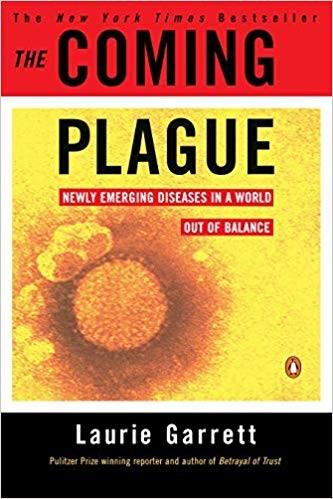
The Coming Plague: Newly Emerging Diseases in a World Out of Balance
by
Laurie Garrett
Published 31 Oct 1994
These structures, which, when examined through a microscope, resembled dark, squiggly worms, were inside the central core, or nucleus, of every cell in a plant or animal. By manipulating chromosomes in test tubes, scientists could change the ways cells looked or grew; exposing chromosomes to radiation, for example, could transform healthy tissue into cancer colonies. True, Gregor Mendel showed in 1865 that some characteristics were passed on as dominant traits from one generation to another, while other genetic characteristics were recessive. But nobody knew exactly how all this worked, why blue-eyed parents had blue-eyed children, or a bacterium could seem to suddenly develop the ability to withstand higher temperatures than normally tolerated by its species.

Betrayal of Trust: The Collapse of Global Public Health
by
Laurie Garrett
Published 15 Feb 2000
It would, he said, transmutate from one thing to another simply by being subjected to a new environment. Lamarck’s ideas had long since been rejected by most of the world’s scientific community, not just because they were at face value absurd, but due to the pioneering genetics efforts of Britain’s Charles Darwin and Slovakia’s Gregor Mendel. Darwin demonstrated that species did evolve over time, but not as a result of spontaneous Lamarckian transmutations. Rather, he showed that mutant deviants always exist within any population and may come to dominate in the presence of powerful selection forces, such as predation or climate, that kill off the more common genetic forms of the species.
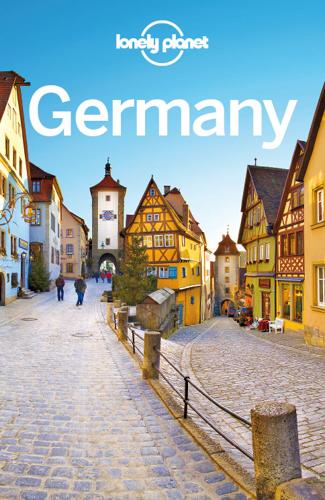
Germany Travel Guide
by
Lonely Planet
Sleeping Most people visit Potsdam on a day trip from Berlin, but only by spending the night can you savour the town’s quiet majesty without the tour-bus crowds. The tourist office (Click here) books private rooms and hotels in person, by phone or online. Hotel Villa Monte Vino HOTEL €€ Offline map Google map (201 3339; www.hotelvillamontevino.de; Gregor-Mendel-Strasse 27; d from €125; ) This charming 1890 villa, complete with dreamy garden and romantic Rapunzel tower (great views!), is a superb find tucked into the leafy hillside above Schloss Sanssouci. Run by passionate owners, it harmoniously infuses historic flair with modern touches like free wi-fi throughout and a gym and sauna.

Artificial Intelligence: A Modern Approach
by
Stuart Russell
and
Peter Norvig
Published 14 Jul 2019
The central idea is simple: variations occur in reproduction and will be preserved in successive generations approximately in proportion to their effect on reproductive fitness. Darwin’s theory was developed with no knowledge of how the traits of organisms can be inherited and modified. The probabilistic laws governing these processes were first identified by Gregor Mendel (1866), a monk who experimented with sweet peas. Much later, Watson and Crick (1953) identified the structure of the DNA molecule and its alphabet, AGTC (adenine, guanine, thymine, cytosine). In the standard model, variation occurs both by point mutations in the letter sequence and by “crossover” (in which the DNA of an offspring is generated by combining long sections of DNA from each parent).